- Newfound maturity to the Civic name
- Fun to drive with excellent handling
- Practical throughout, particularly the boot
- It's just too expensive
- CVT auto dulls the engine's sparkle
- No spare wheel and parking sensors
Honda is in the middle of something of a reinvention in Australia. Having launched a new agency model and with a range of new product like the Civic Type R and CR-V due to land within the next few years, the brand’s most recent Australian launch has been the new-generation Civic. Long the bread and butter of the Honda brand, the Civic is one of its best known products and for the 11th generation of the car, Honda Australia switched production back to Japan, culled the sedan and base model variants, and has introduced a decidedly more premium car. Does the 2022 Honda Civic VTi-LX pull it off? Let’s find out.
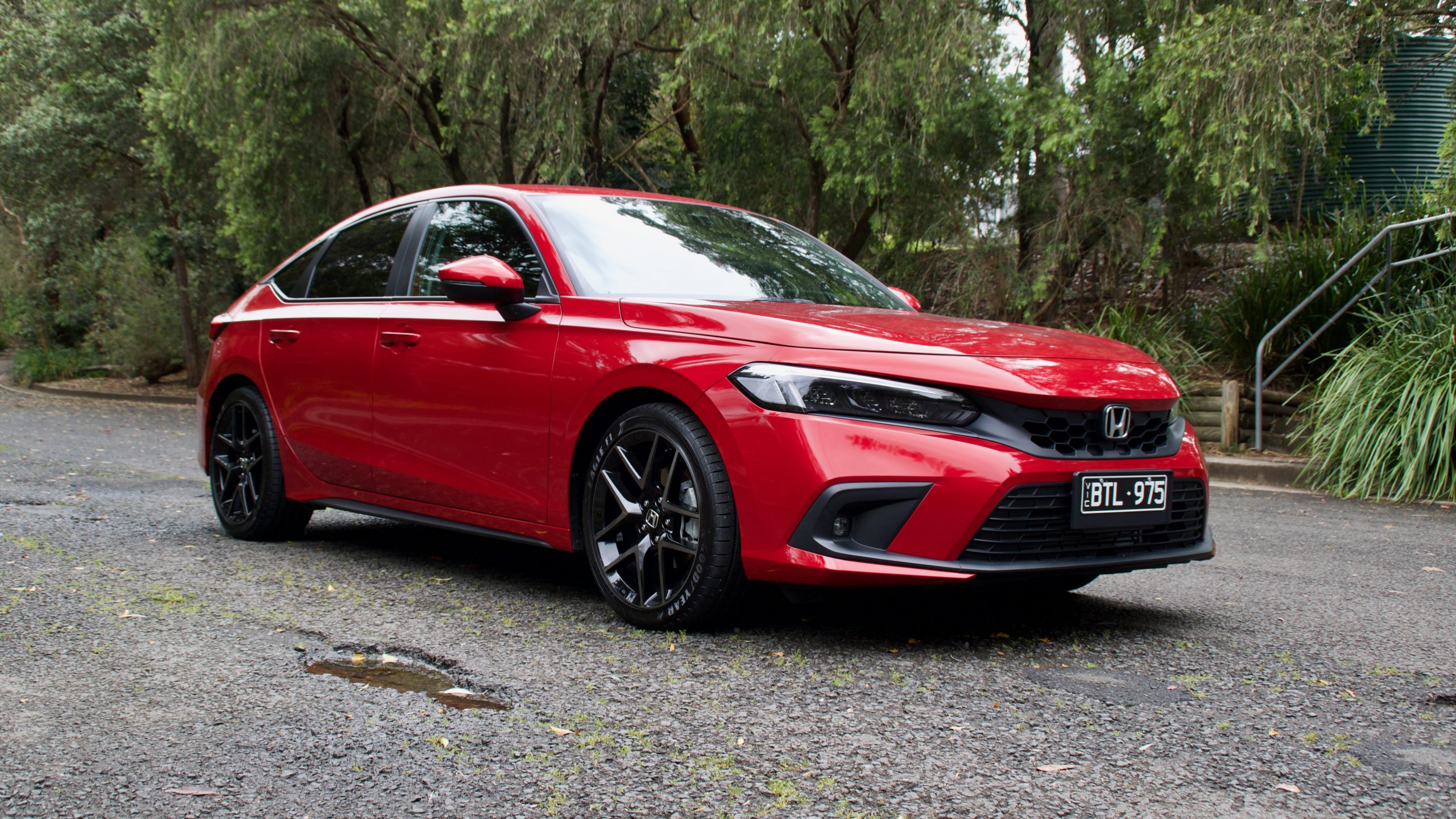
There’s a lot to discuss with the new Civic. While it uses the same platform and engine as before, it’s been heavily updated with a sleek new look, a more upmarket interior, an increase in available technology and, according to the brand, an uptick in driving maturity with a bigger emphasis on refinement. Like the new HR-V, it’s not cheap – priced at $47,200 drive away nationwide, Honda expects to sell 900 units annually.
Price & Equipment: 6/10
At the moment, the 2022 Honda Civic VTi-LX is the only Civic on offer in Australia, with both the Type R and e:HEV hybrid waiting in the wings for a 2023 release. The single [for now] Civic variant is priced at $47,200 drive away nationwide.
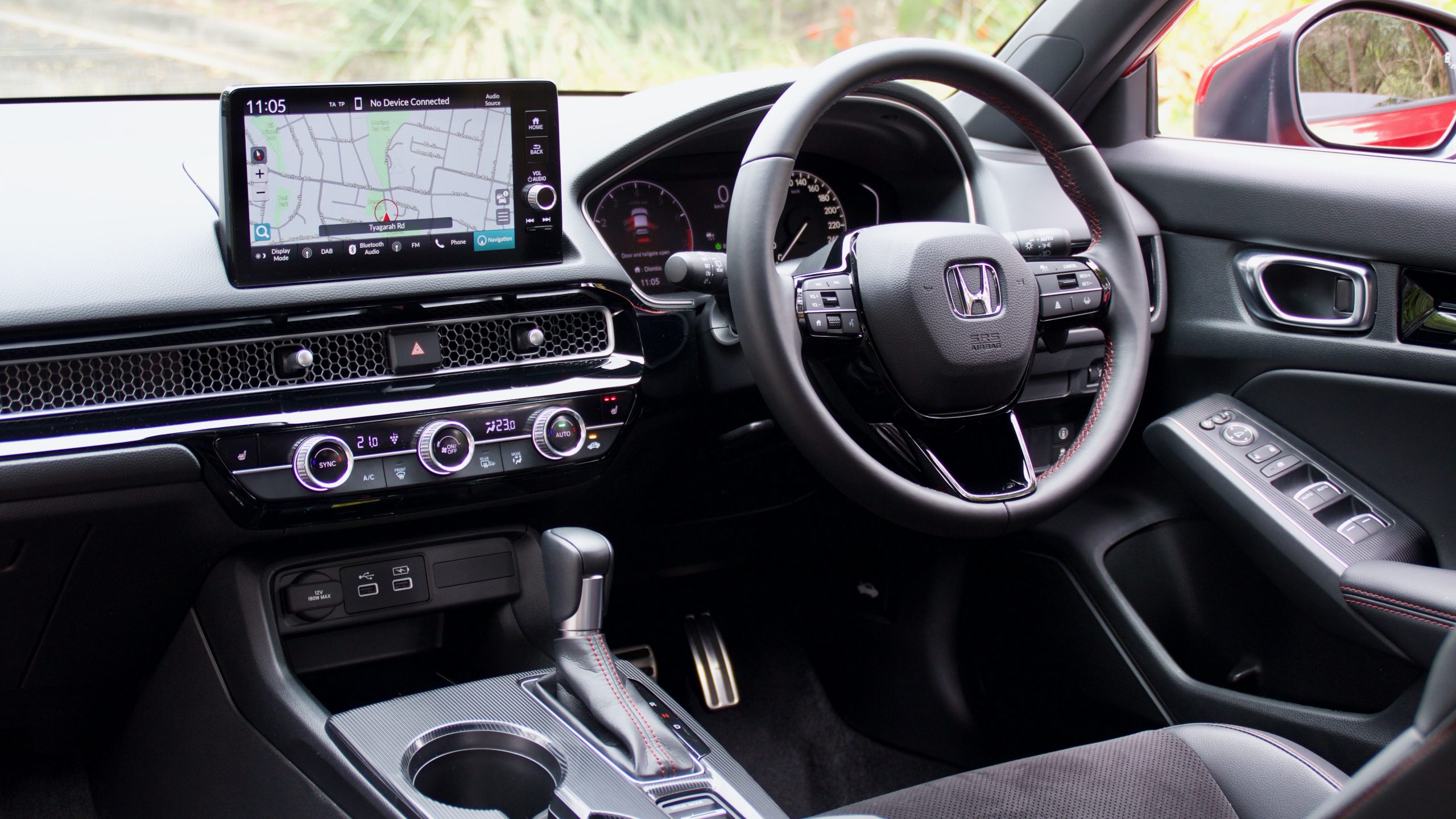
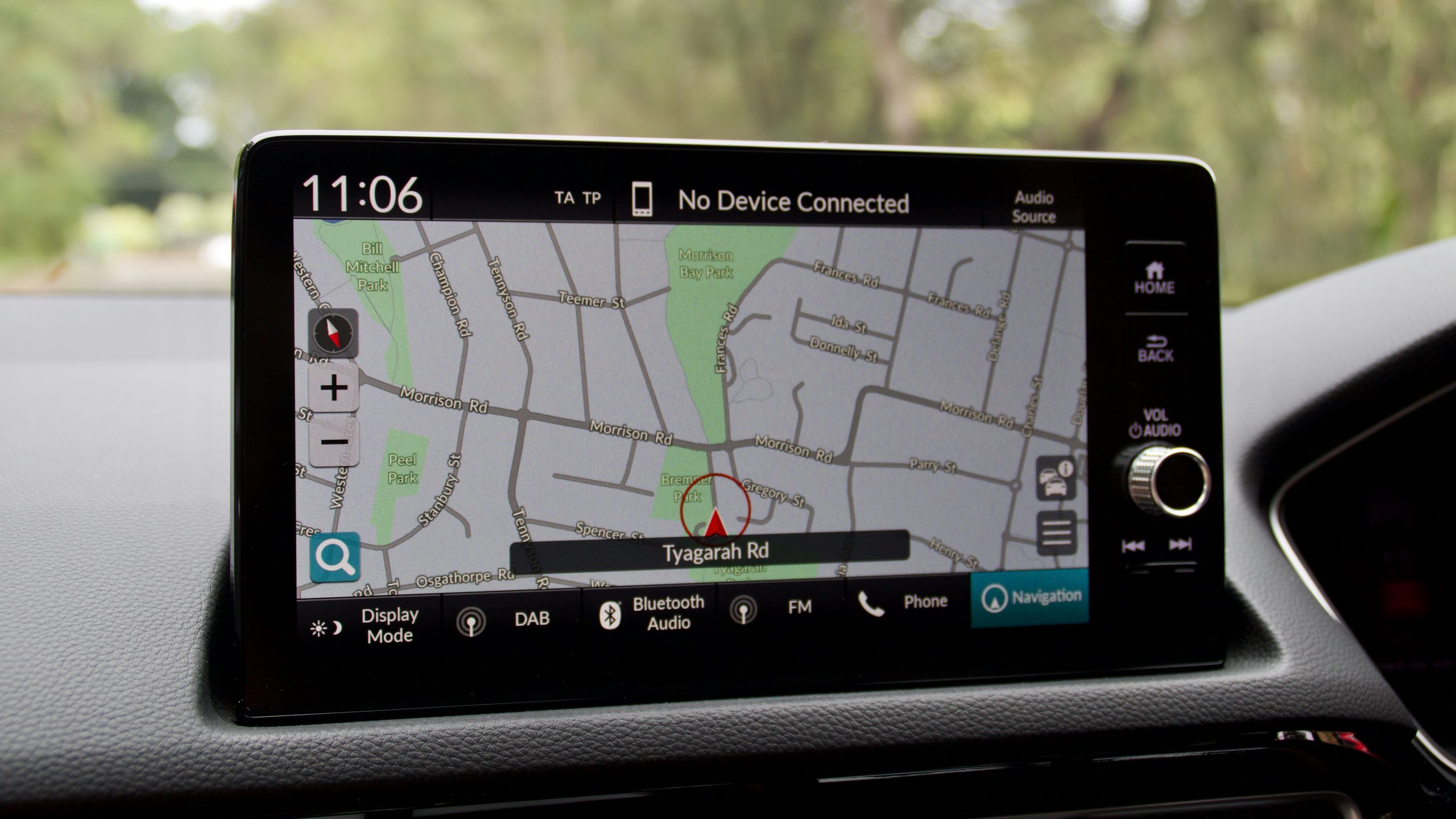
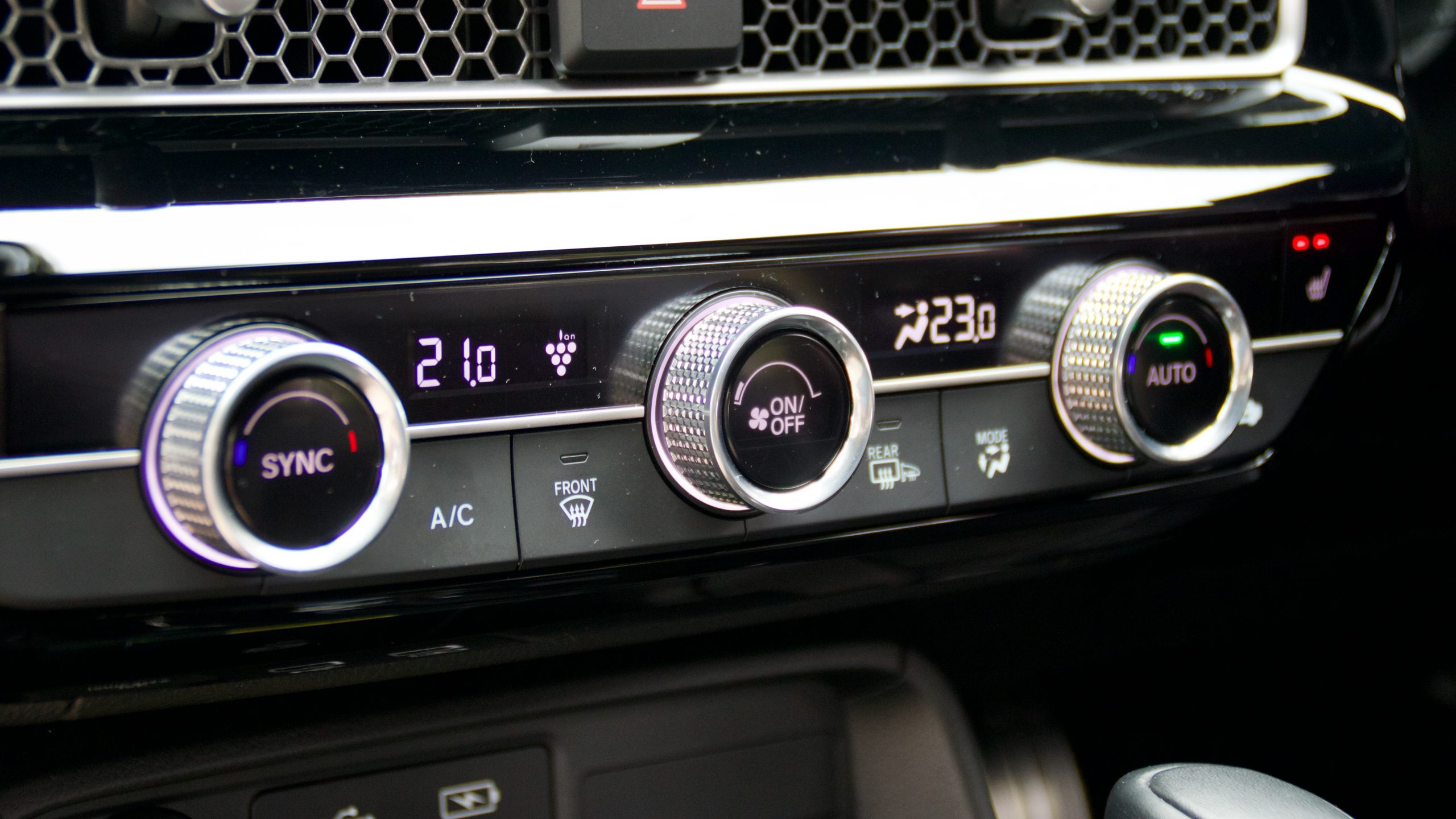
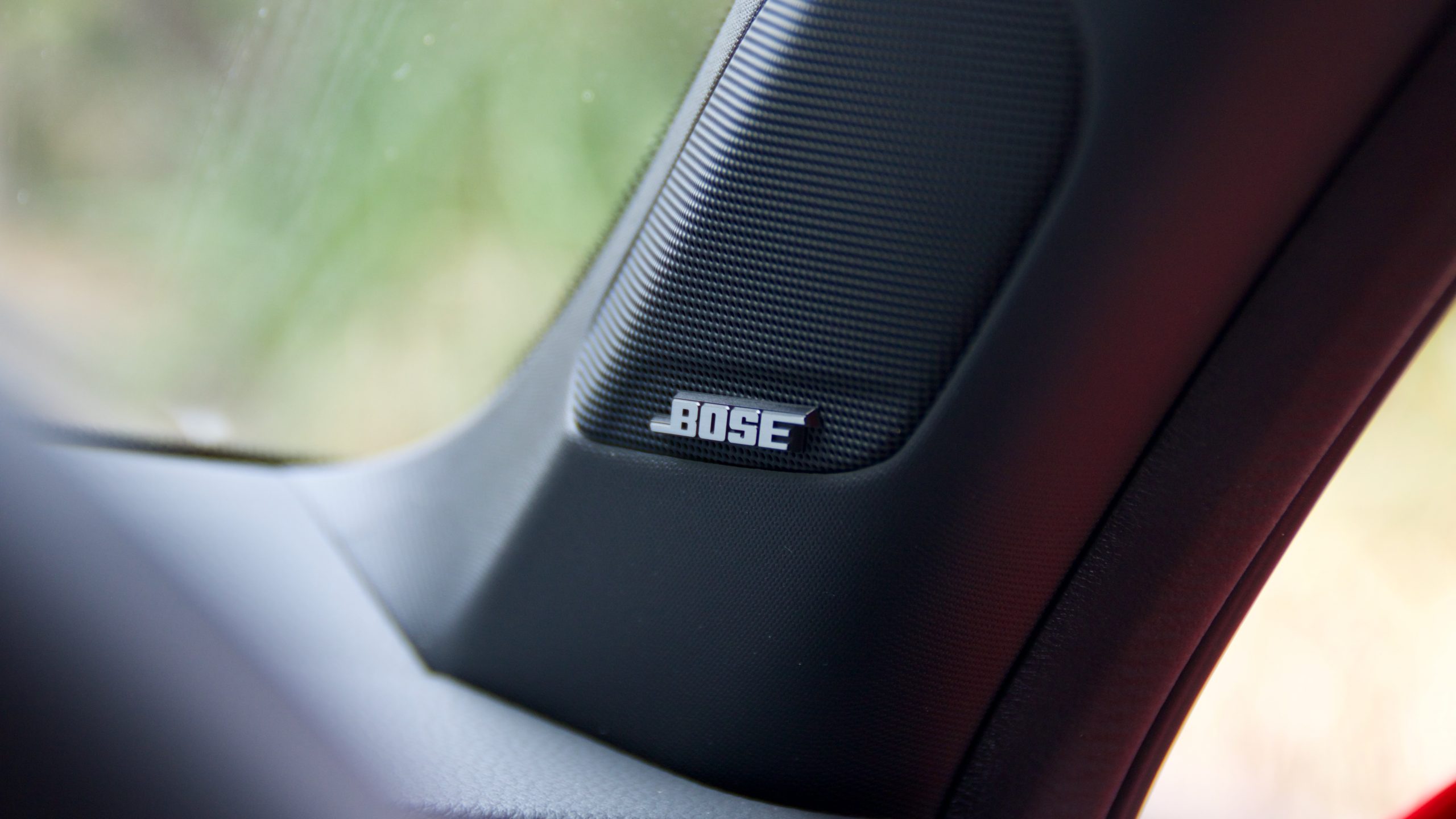
Standard kit includes 18-inch alloy wheels, automatic LED lighting, auto wipers, keyless entry and start, a leather steering wheel with paddle shifters, synthetic leather and suede upholstery, heated and eight-way driver/four-way passenger electrically adjustable front seats, dual-zone climate control with rear vents, a 9.0-inch touchscreen with wireless Apple CarPlay, wired Android Auto, satellite navigation, digital radio, a wireless phone charger, two USB-A charging ports, a 12-speaker Bose sound system, red LED ambient interior lighting, rear privacy glass and heated/auto-folding mirrors.
Safety kit includes eight airbags, auto emergency braking (AEB) with pedestrian detection, lane departure warning with lane keep assist, adaptive cruise control with stop and go functionally, blind-spot monitoring with rear cross-traffic alert, driver attention monitoring, a reversing camera, auto high beam and traffic jam assist.
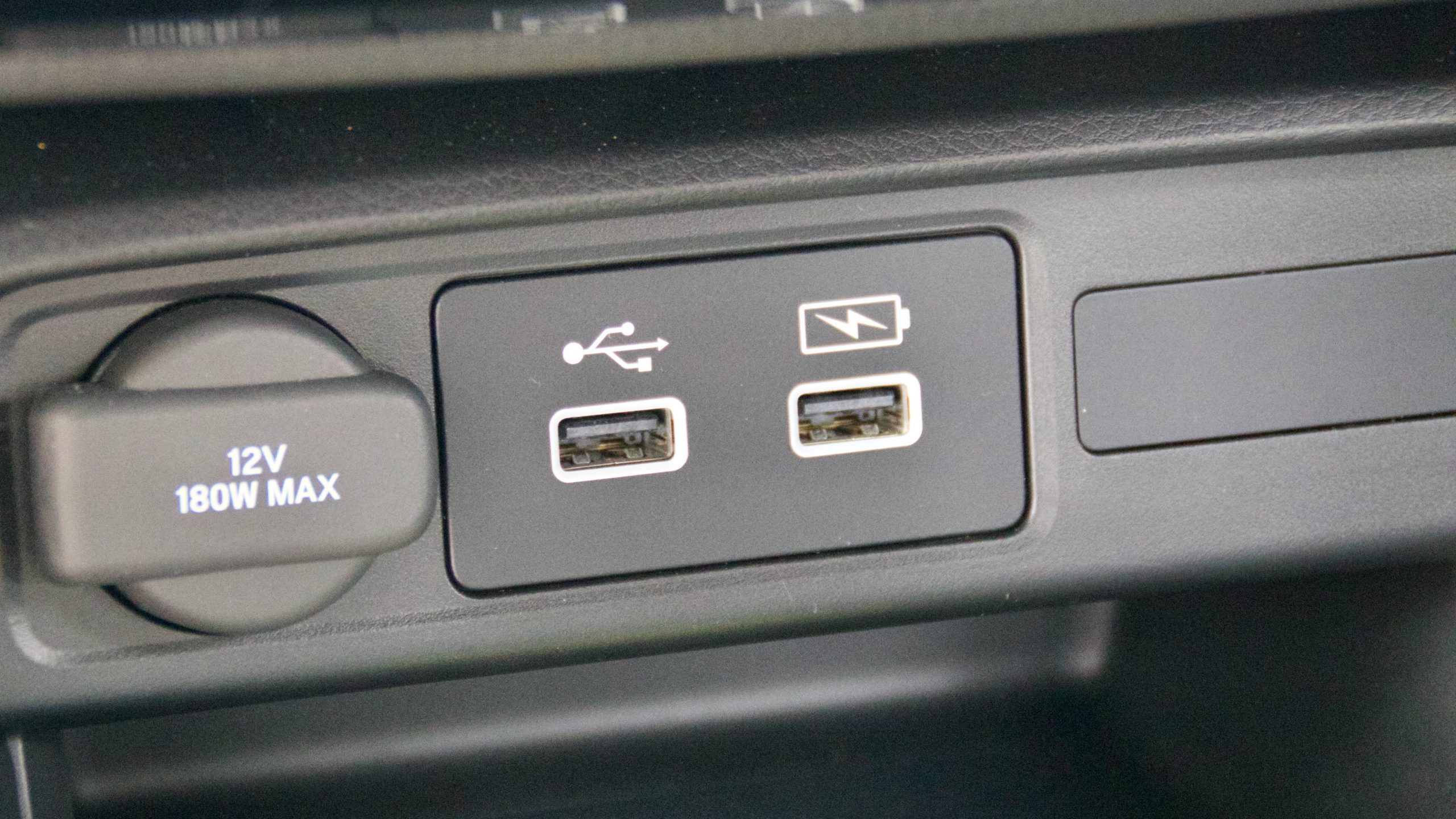
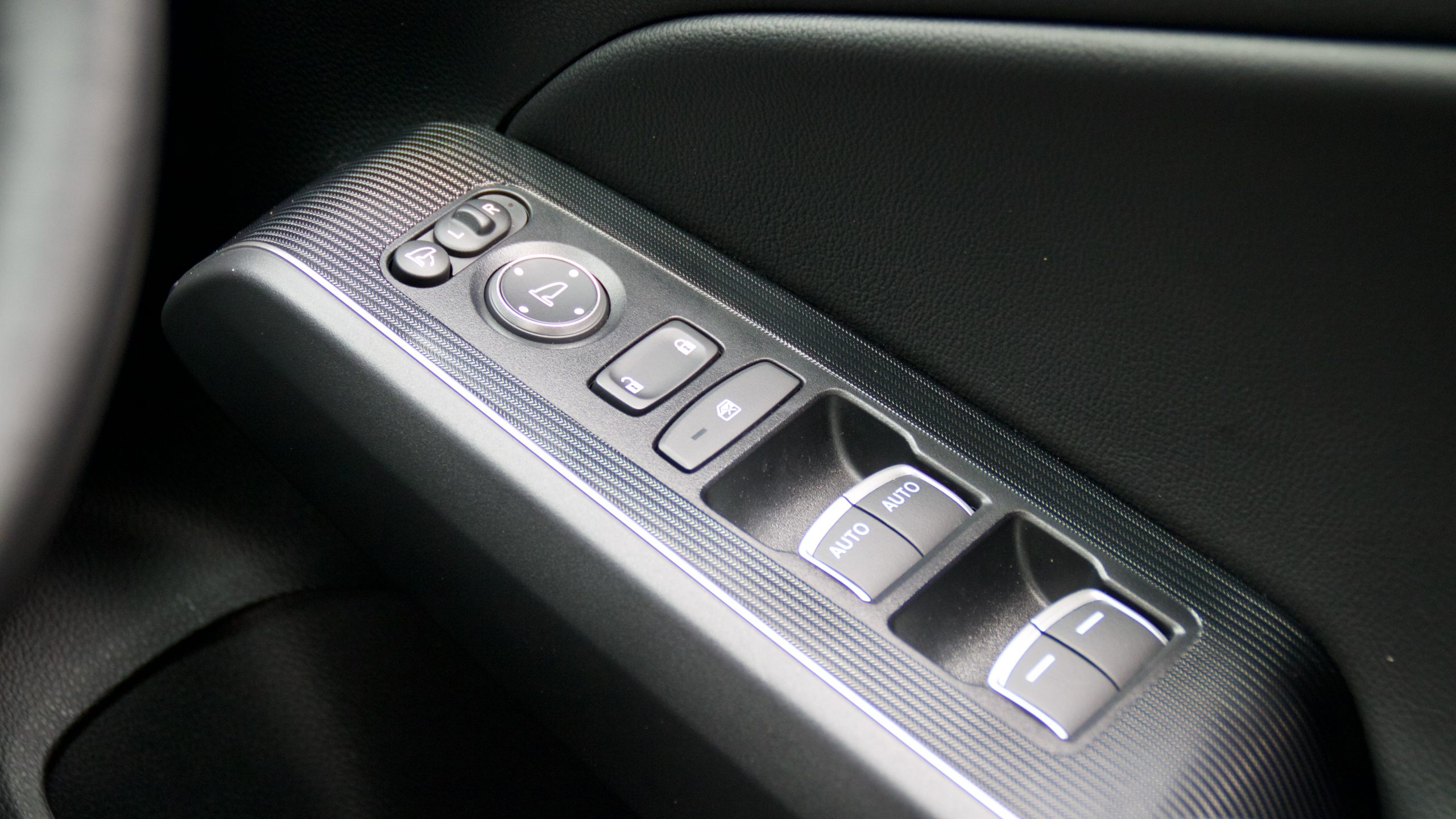
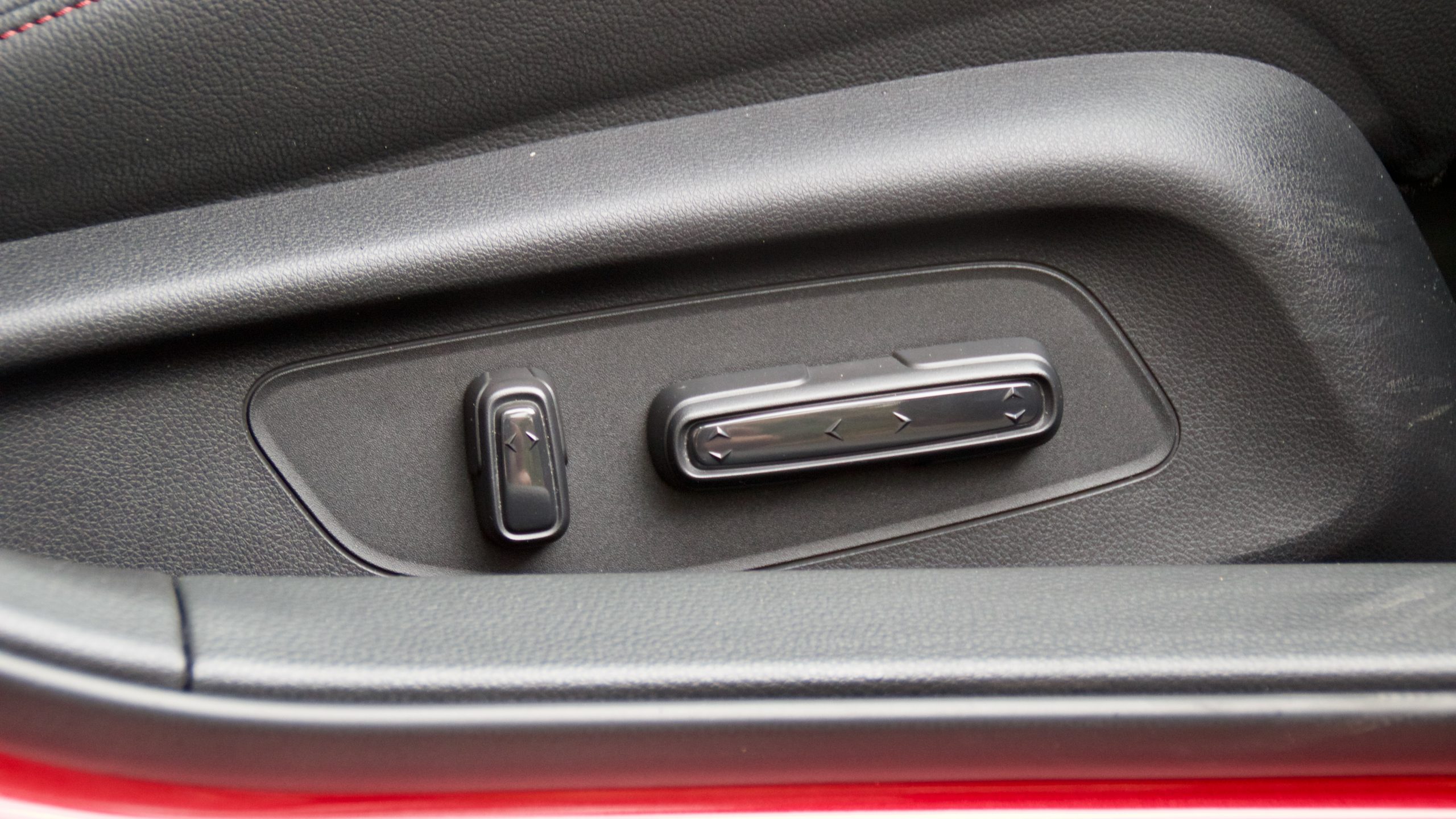
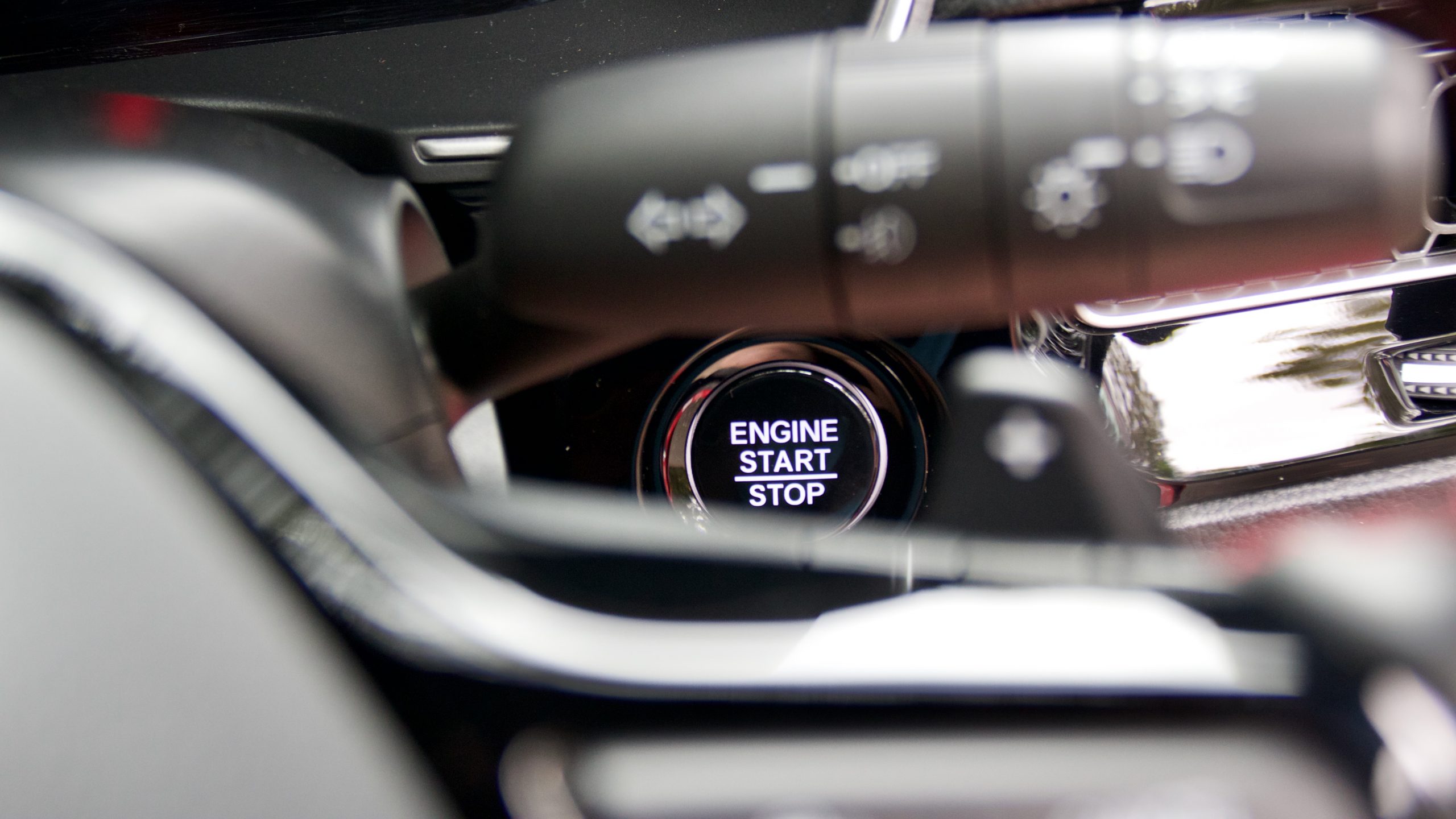
Just four colours are available for the Civic, and they’re all no-cost: ‘Platinum White Pearlescent’, ‘Brilliant Sporty Blue’, ‘Crystal Black’ and our test car’s ‘Premium Crystal Red’. The sole interior colour option is black with red highlights.
There are some features missing from the Civic’s equipment list that we’d expect for its price – a heated steering wheel, parking sensors, lumbar adjustment for the front seats, a sunroof, rear charging ports are all standard on European-specification Civics (which are also Japanese made), but unfortunately not available here.
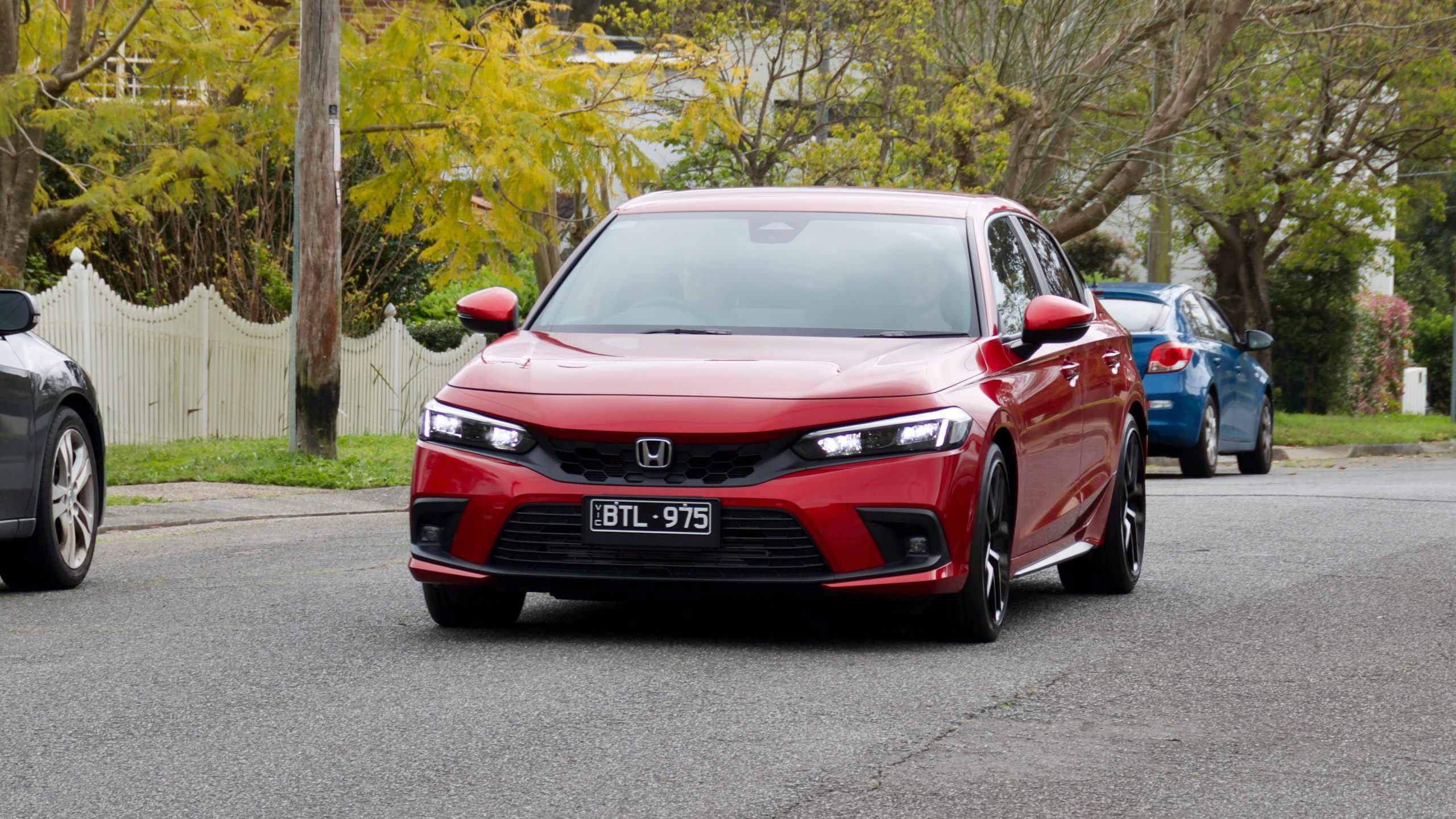

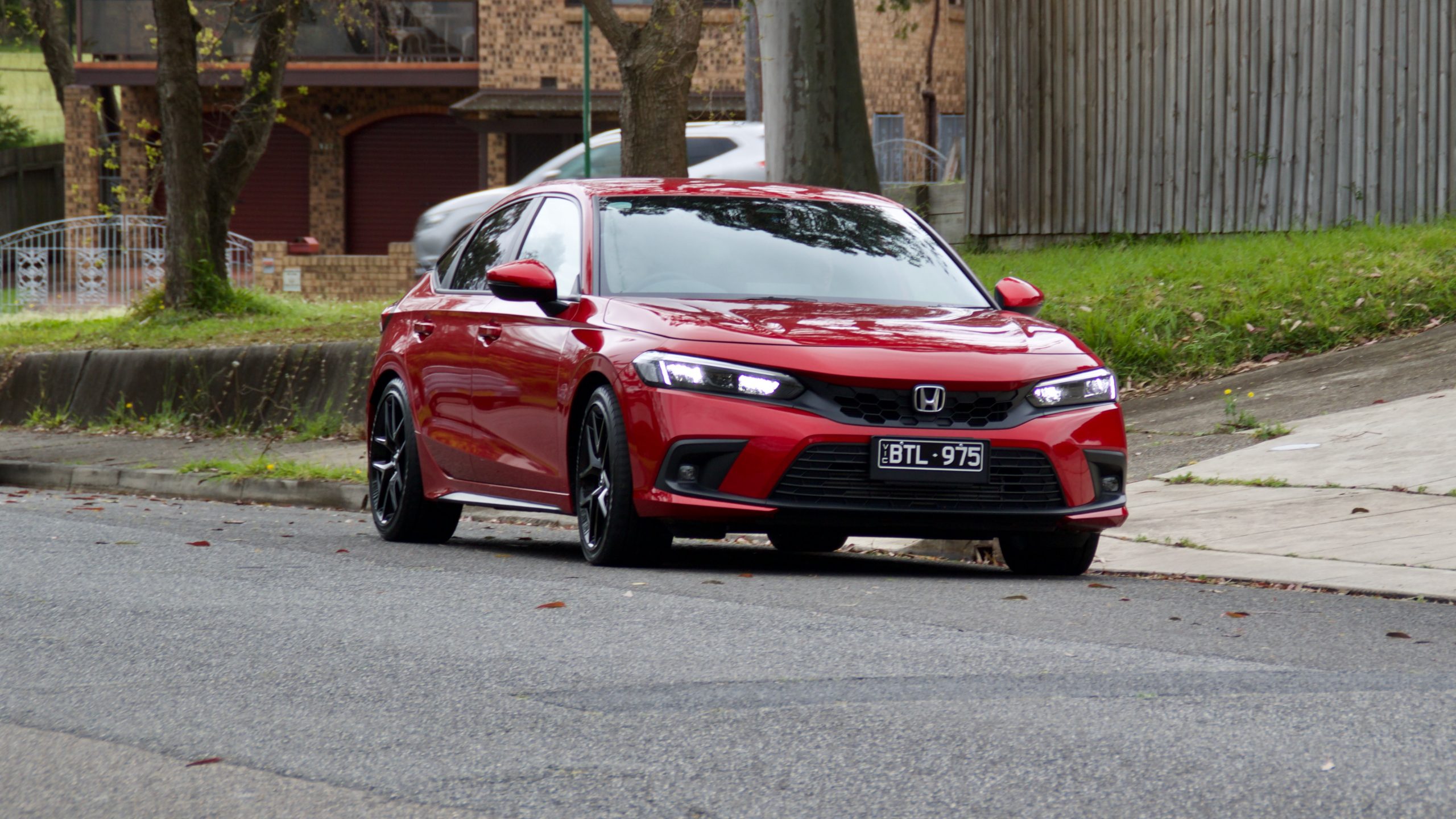
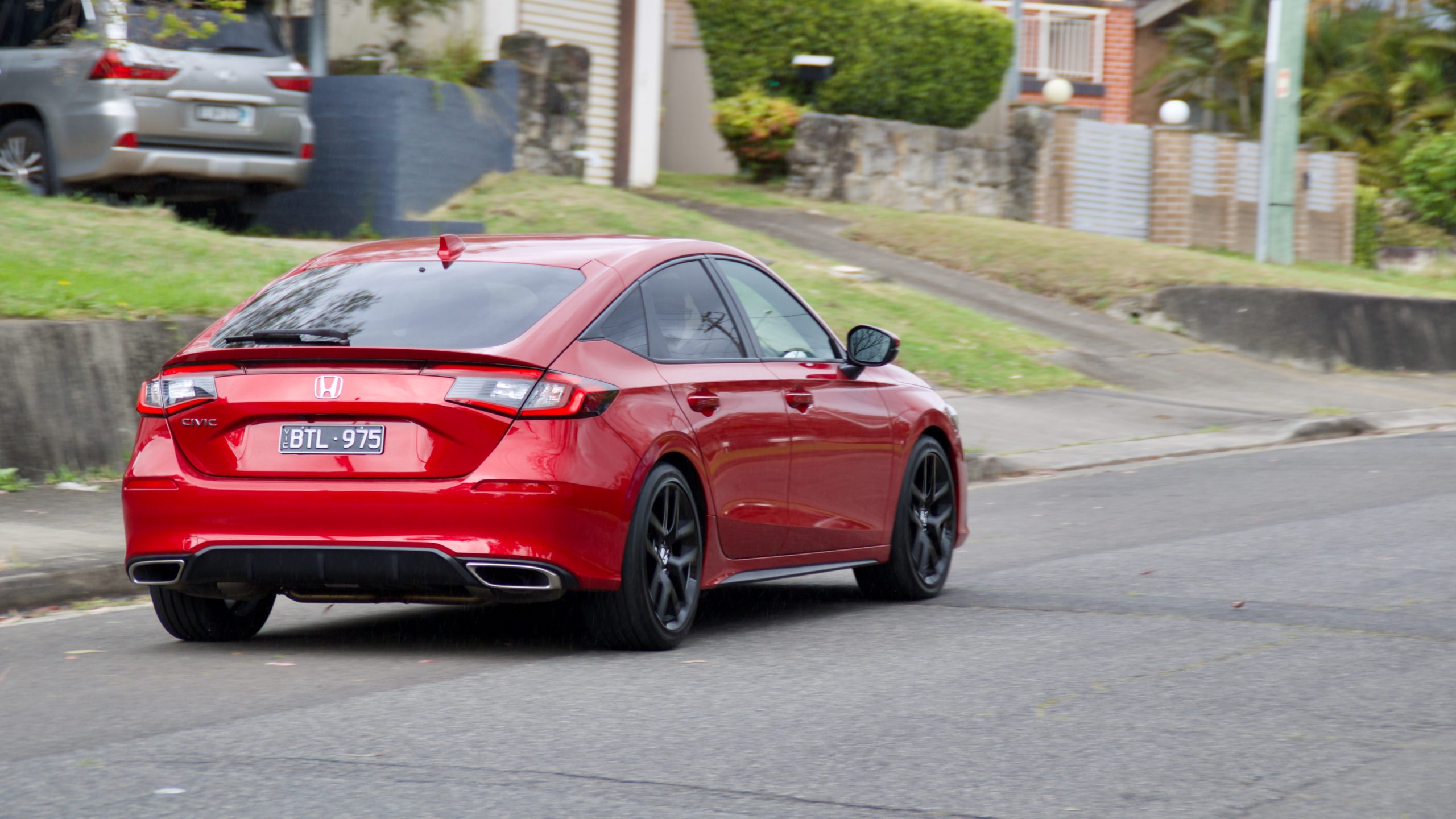
In our opinion, the key competitors to the Civic VTi-LX are the Mazda3 G25 Astina and Volkswagen Golf R-Line. The Mazda3 G25 Astina is priced at around $44,500 drive away (for the auto) and comes with Matrix headlights with adaptive high beam, a 360-degree camera, a heads-up display, full leather upholstery, a wider range of driver’s seat adjustment, a larger infotainment screen, front and rear parking sensors, rear auto braking, four automatic windows and a sunroof – all missing from the Civic.
Getting into the Golf R-Line will cost you around $45,000 drive away, and it makes the Civic look expensive. The Civic has synthetic leather and suede trim versus the Golf’s cloth and suede, a premium sound system (which is optional on the Golf) and more interior and boot space, though the Golf still has a larger centre screen, a fully-digital driver’s display, a heated steering wheel and tri-zone climate control. The Golf also has more safety kit like driver attention monitoring and auto rear braking.

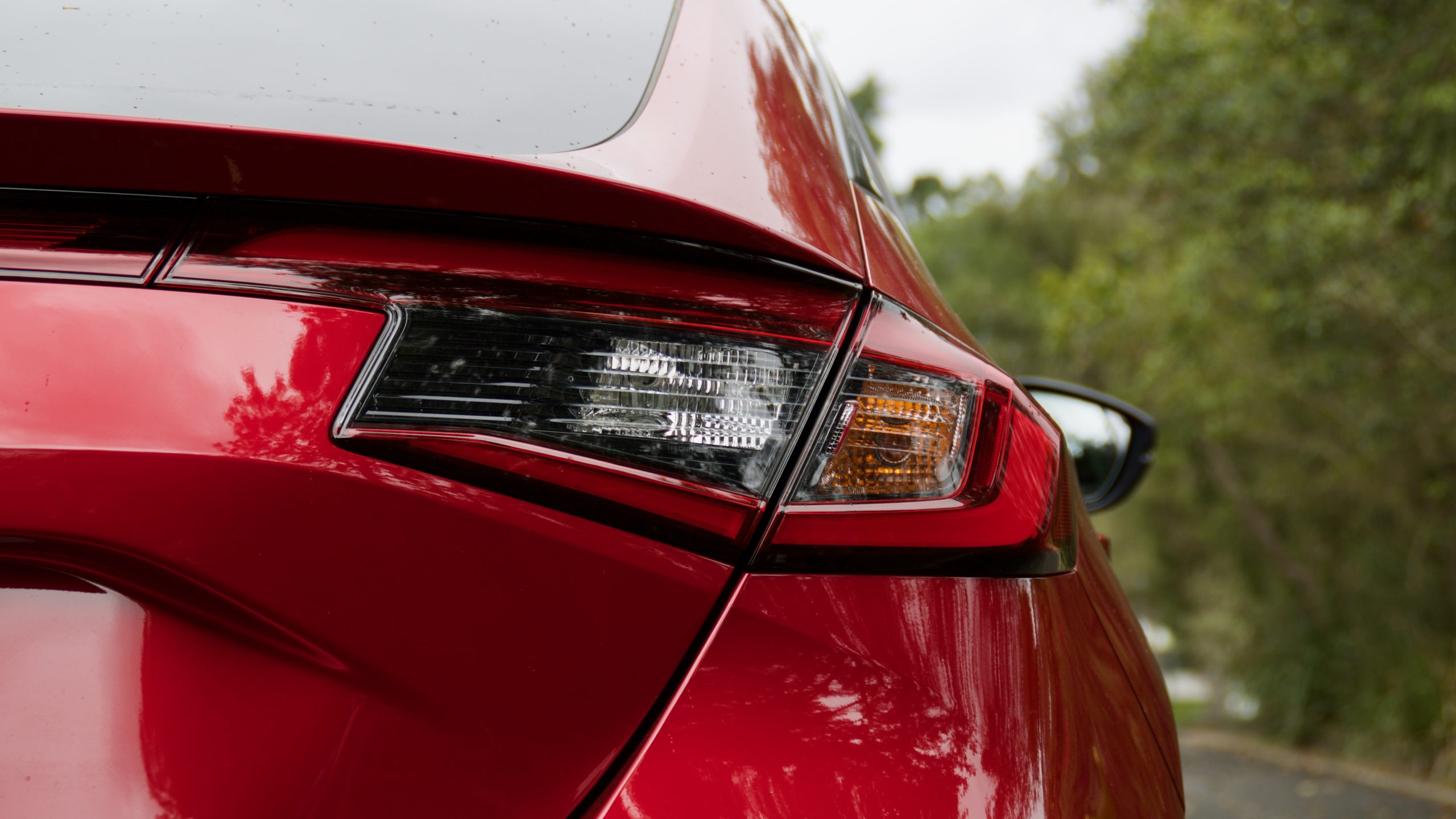
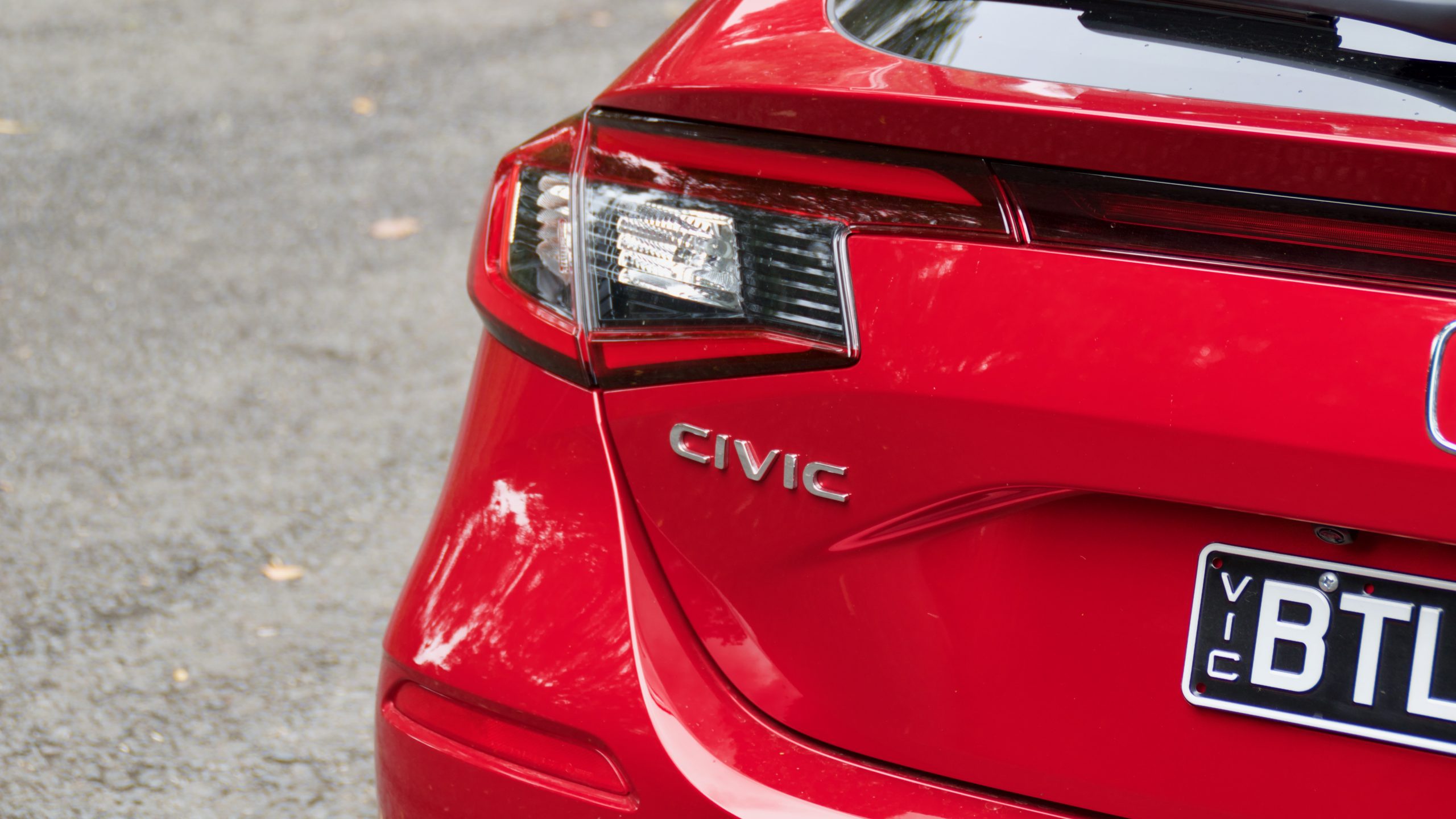

Like the recently released HR-V, the Civic’s pricing looks expensive compared with the competition, especially when its main competition is not only cheaper to buy, but better equipped as well.
Performance & Economy: 8/10
Under the bonnet of the 2022 Honda Civic VTi-LX is the same 1.5-litre turbocharged four-cylinder petrol engine found in various other Honda models globally, and in this tune, it makes 131kW of power (at 6,000rpm) and 240Nm of torque (between 1,700rpm and 4,500rpm). In Australia, it’s matched solely to a CVT automatic transmission with paddle shifters for part-manual control with seven stepped ratios.
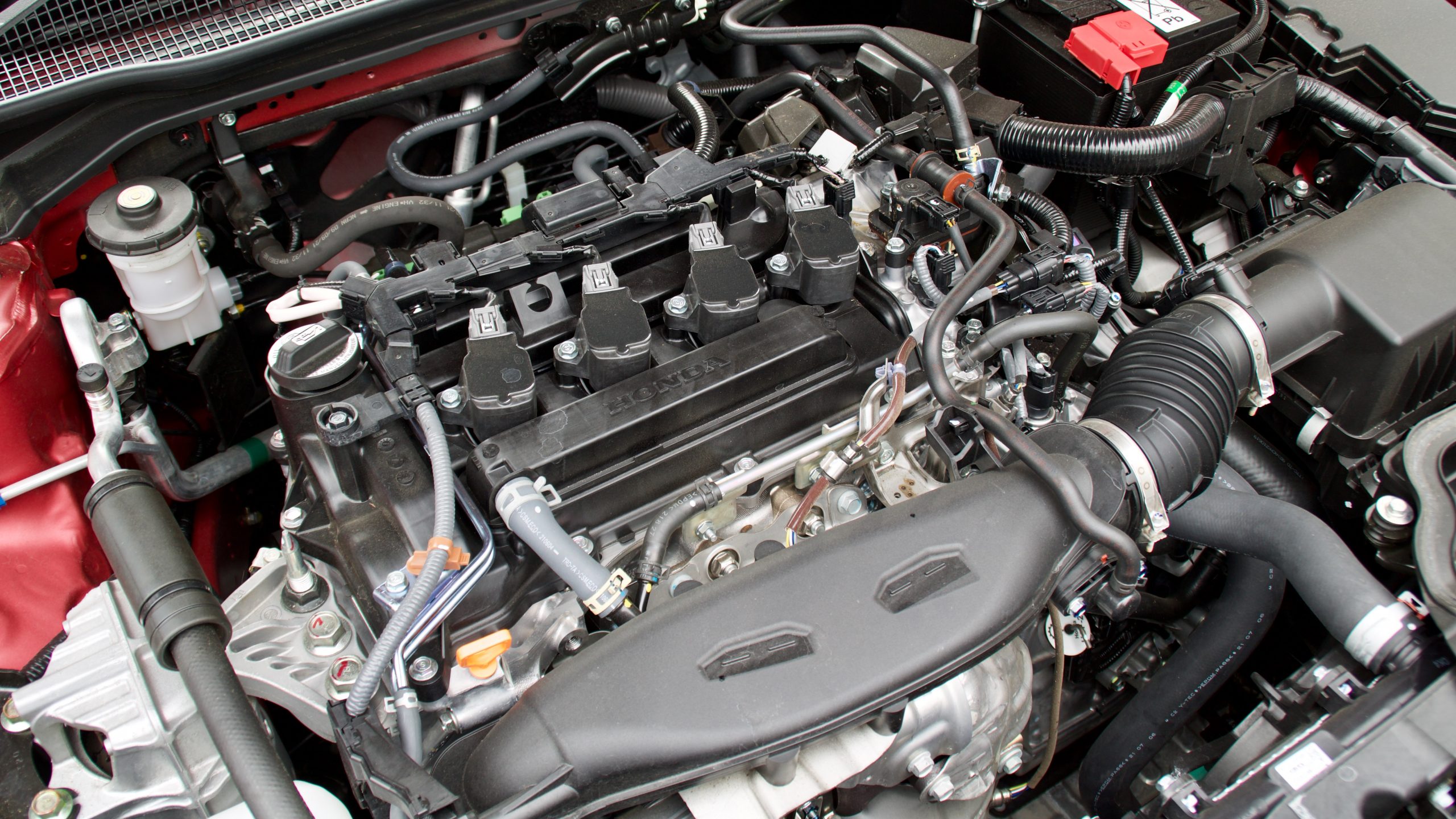
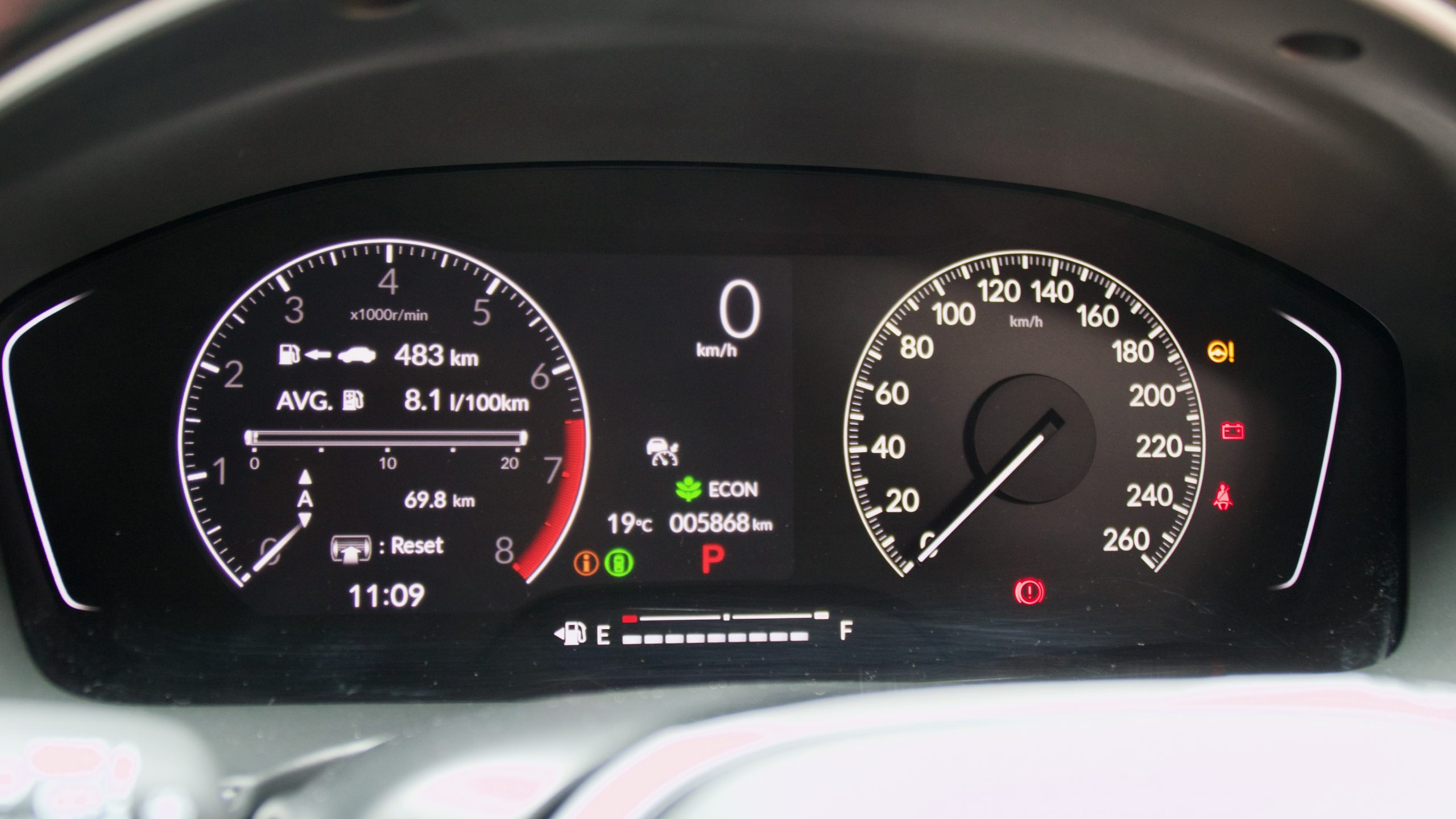
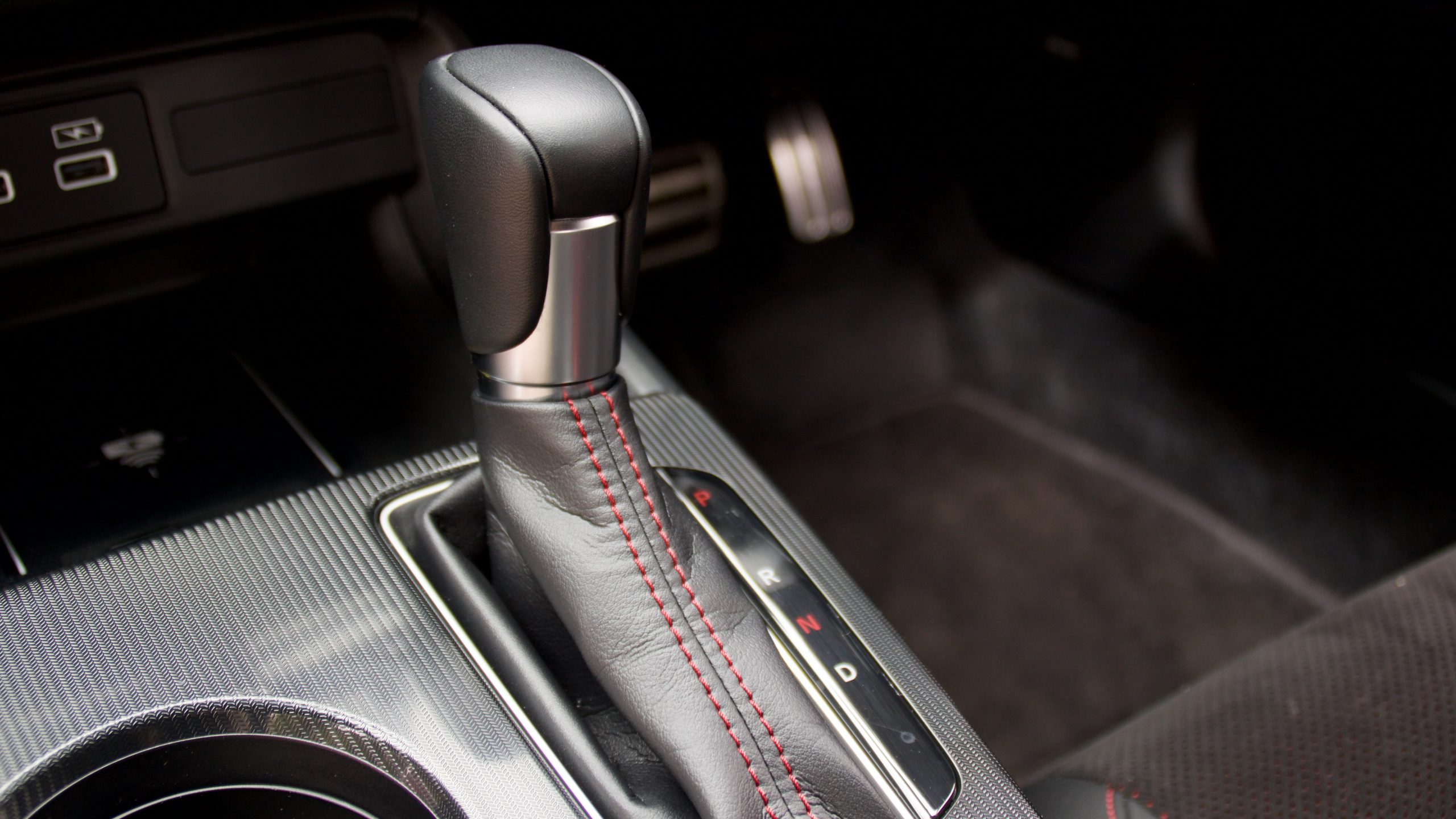
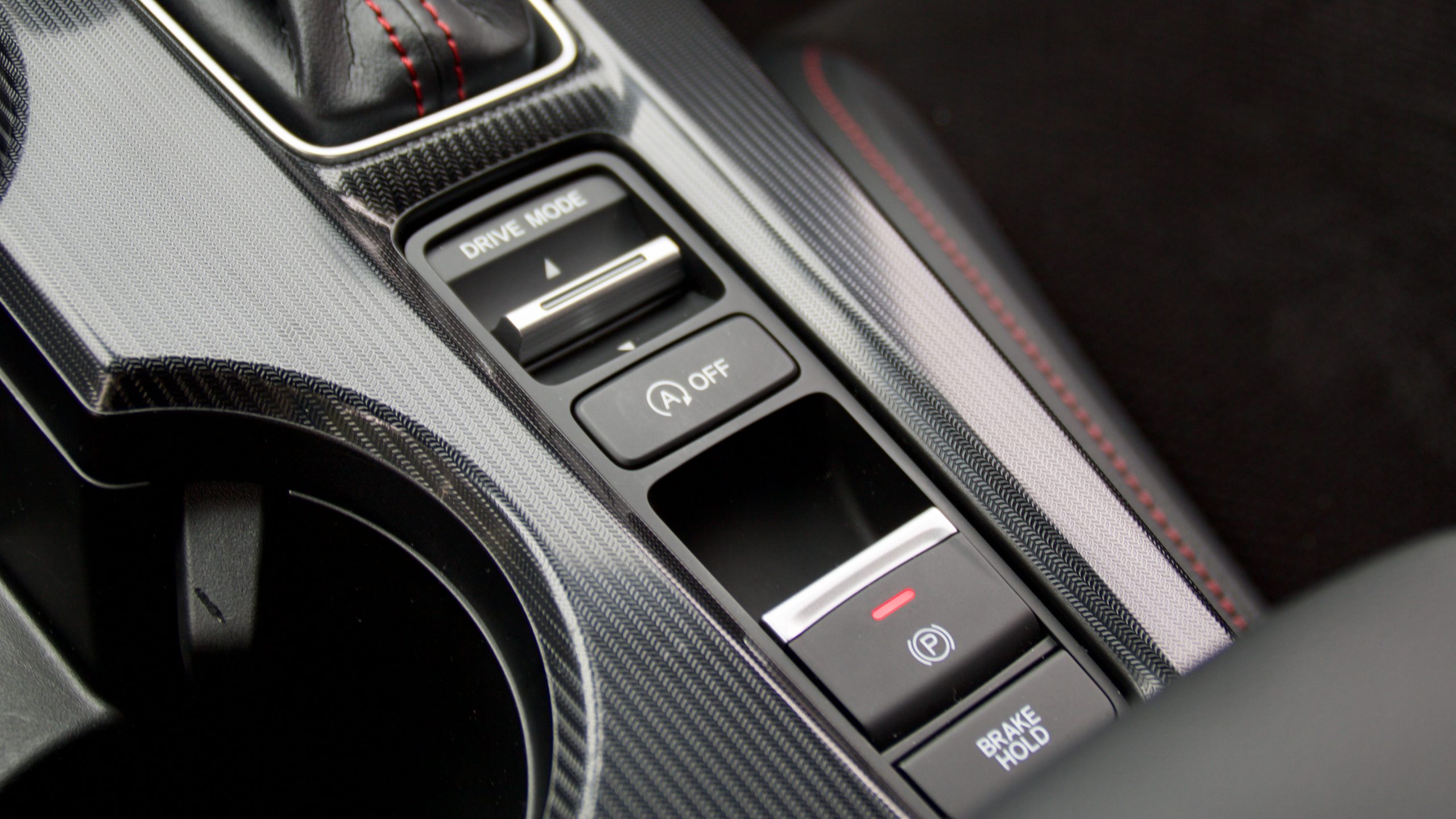
The engine is uprated slightly compared with the last generation Civic, with 4kW more power and 20Nm more torque. Its tare weight is also up by 27kg to 1,358kg, but it still feels quite spritely and while there’s no claimed 0-100km/h time, we guestimate it to be around the 7.5-second mark, which is more than quick enough for a car of this size. Peak torque hits at just 1,700rpm, meaning that you don’t have to rev it to get the most out of it and it’s more refined than the noisy 2.5-litre naturally aspirated engine in the Mazda3.
The only transmission available on the 2022 Honda Civic VTi-LX in Australia is a CVT automatic with seven stepped ratios and paddle shifters. As far as CVTs go, the transmission is pretty good. It’s great in regular driving with its tendency to keep revs as low as possible, and it also will engine brake to help braking. Add in a touch of sporty driving, however, and the stepped ratios it offers up are no substitute for a regular transmission. Japanese Civics are available with a six-speed manual, and we wish that it was offered locally as it would make the drivetrain as engaging as the handling.
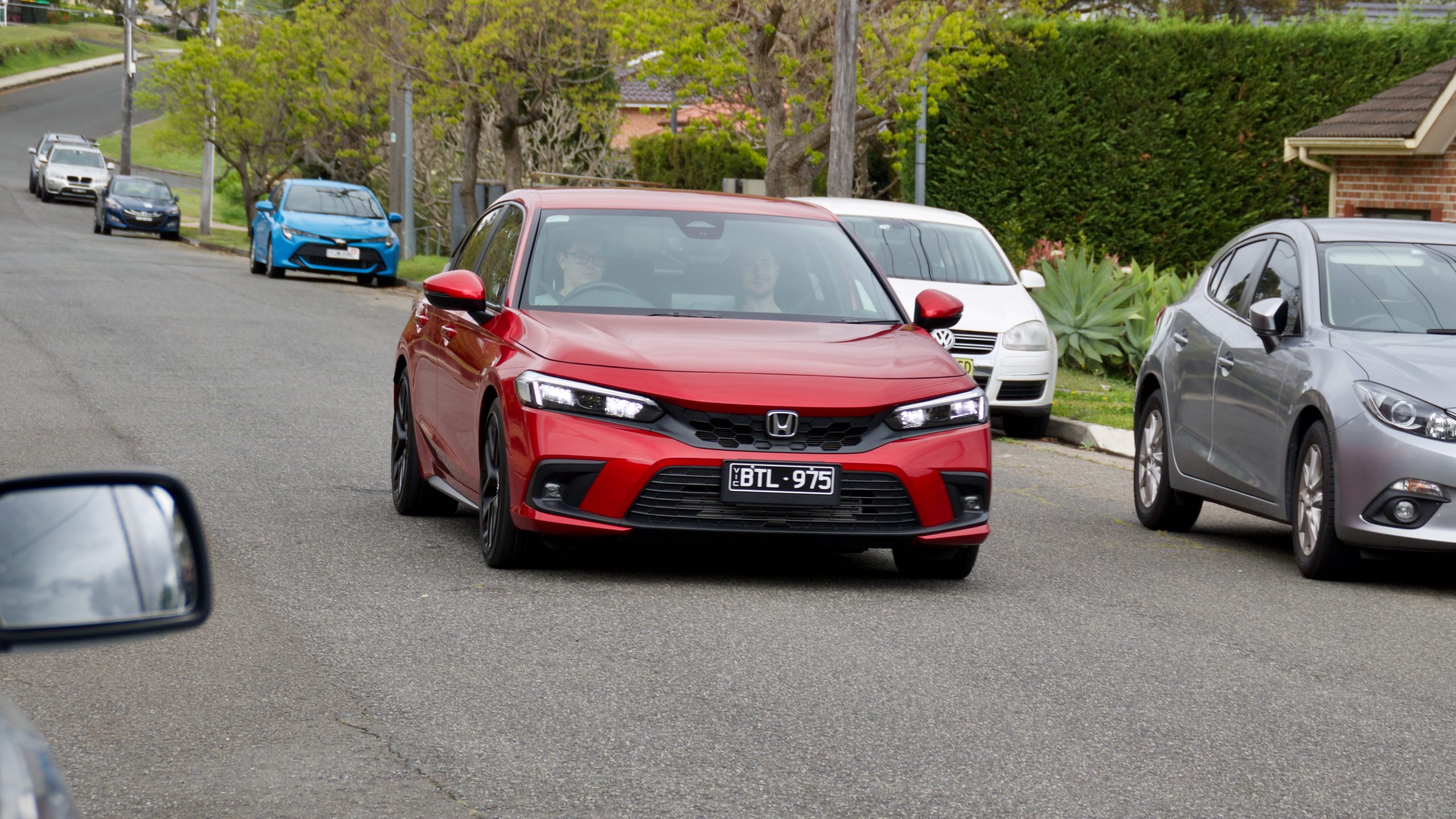
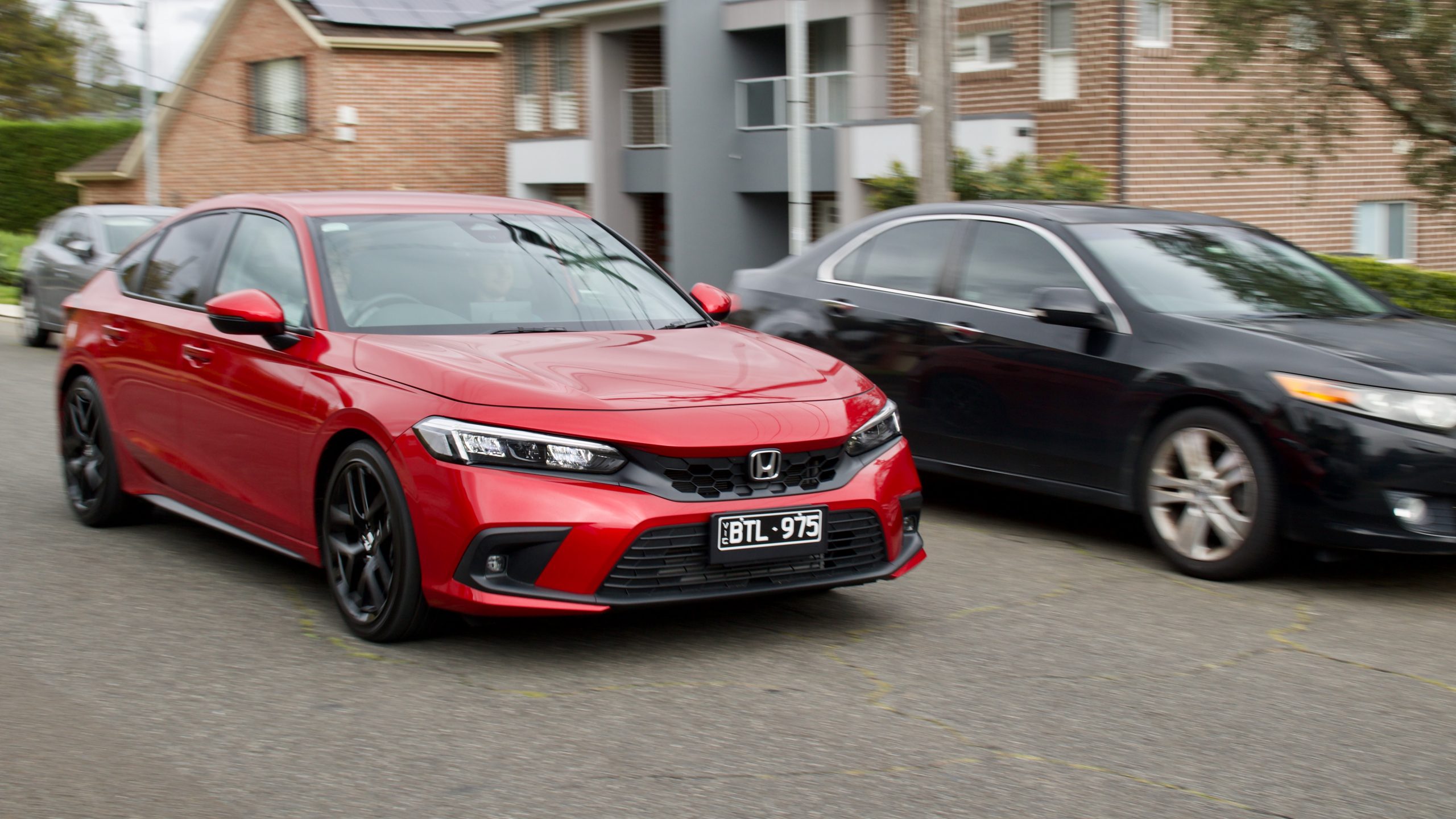
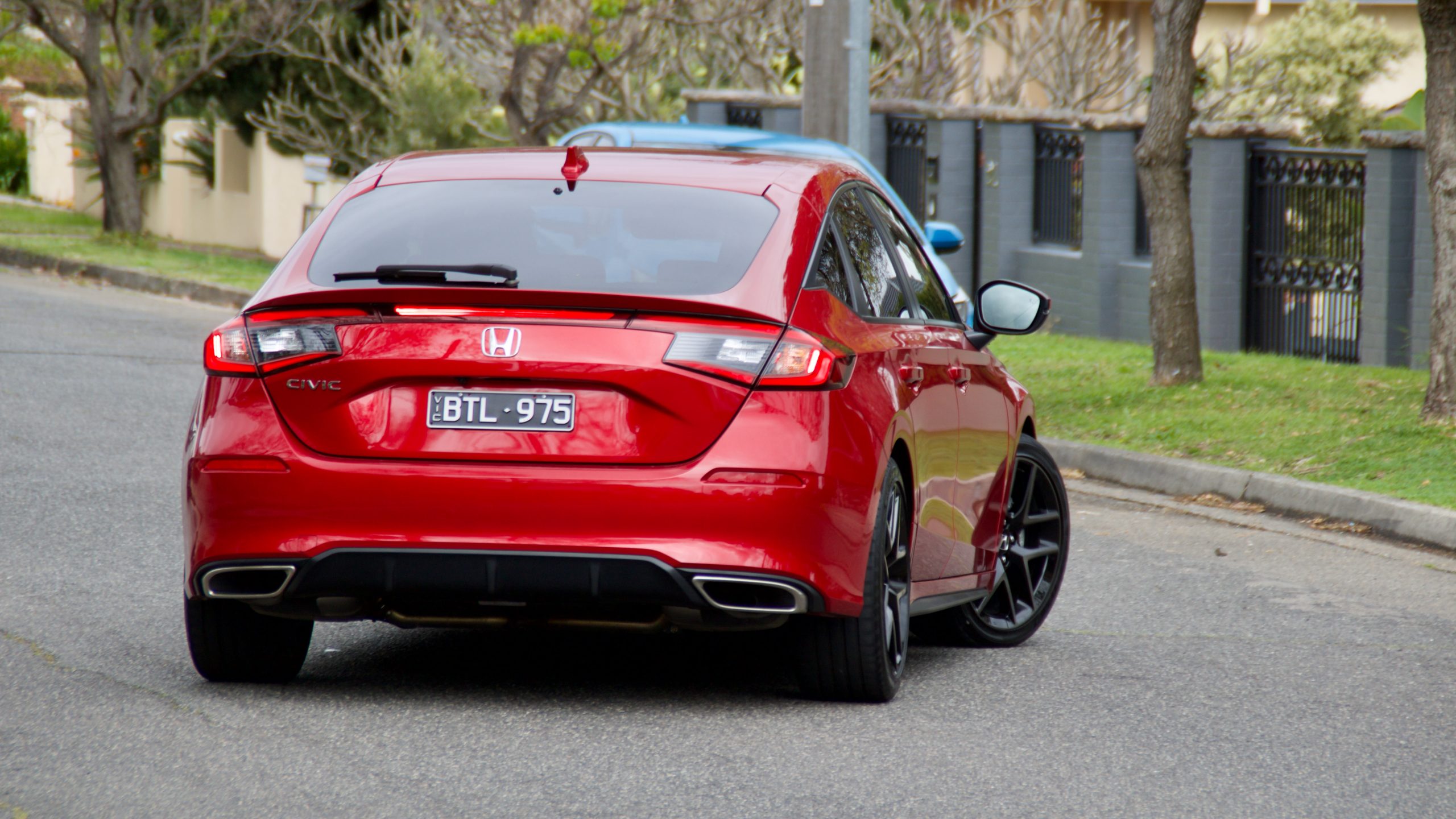
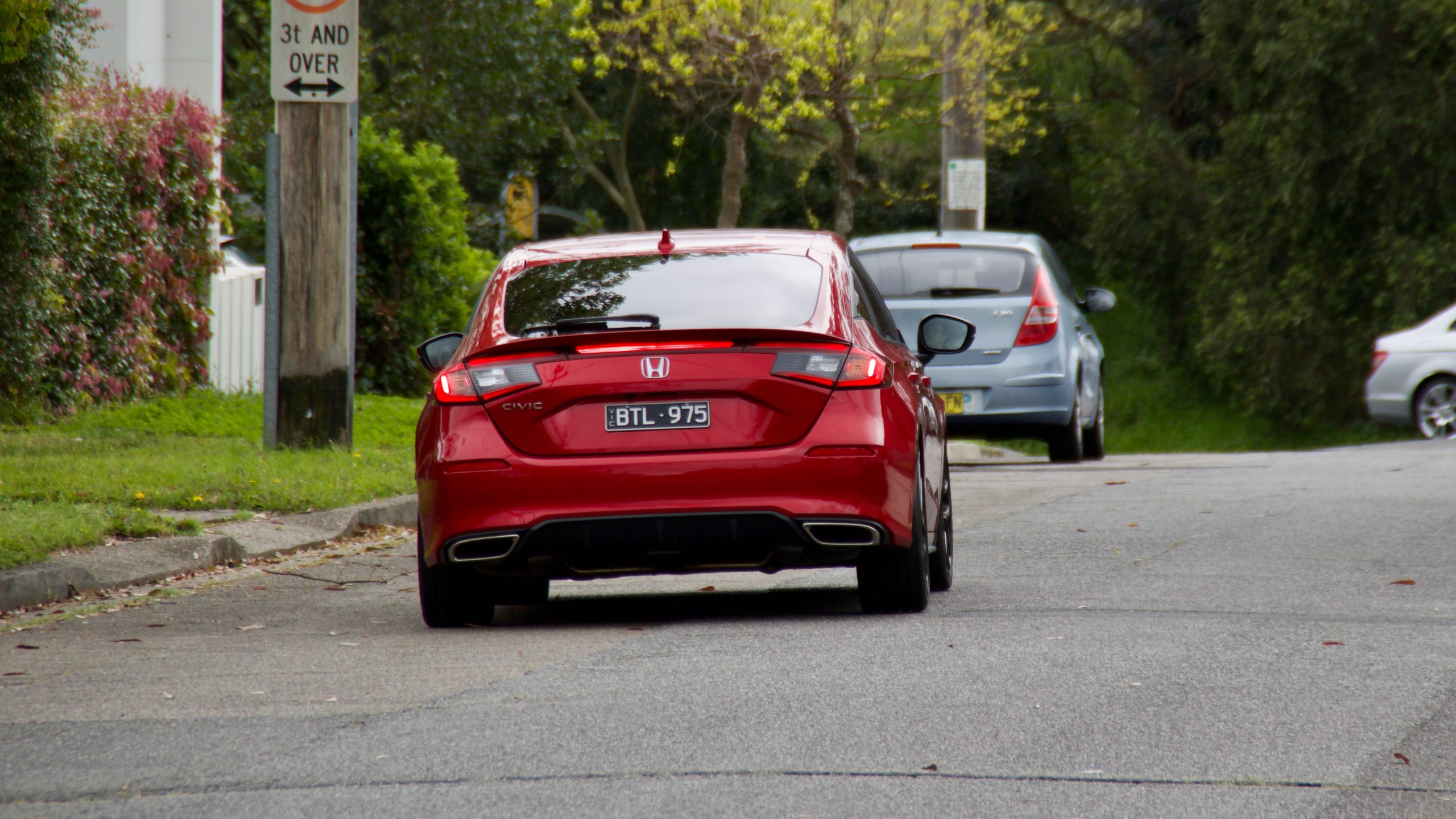
The claimed combined fuel consumption for the Civic VTi-LX is 6.3L/100km and we achieved 8.4L/100km in mostly urban driving. The Civic has a 47-litre fuel tank and can use 91RON fuel. If you’re chasing better fuel economy from a hatchback, we’d suggest waiting for the Civic e:HEV 2.0-litre hybrid, which is due in Australia in 2023 and is rated at just 4.7L/100km in Europe (Australian figures are yet to be confirmed).
Ride & Handling: 9/10
Like the previous generation Civic, the new model offers up a superb ride and handling balance that is definitely one of the best in the segment. While the ride quality is a touch firm and you never really forget that while driving it, the handling is downright fun and it echoes sportier non-Type R Civic generations of the past, like the EG and EK. A particular highlight is the quick and feelsome steering, which is a joy to use.
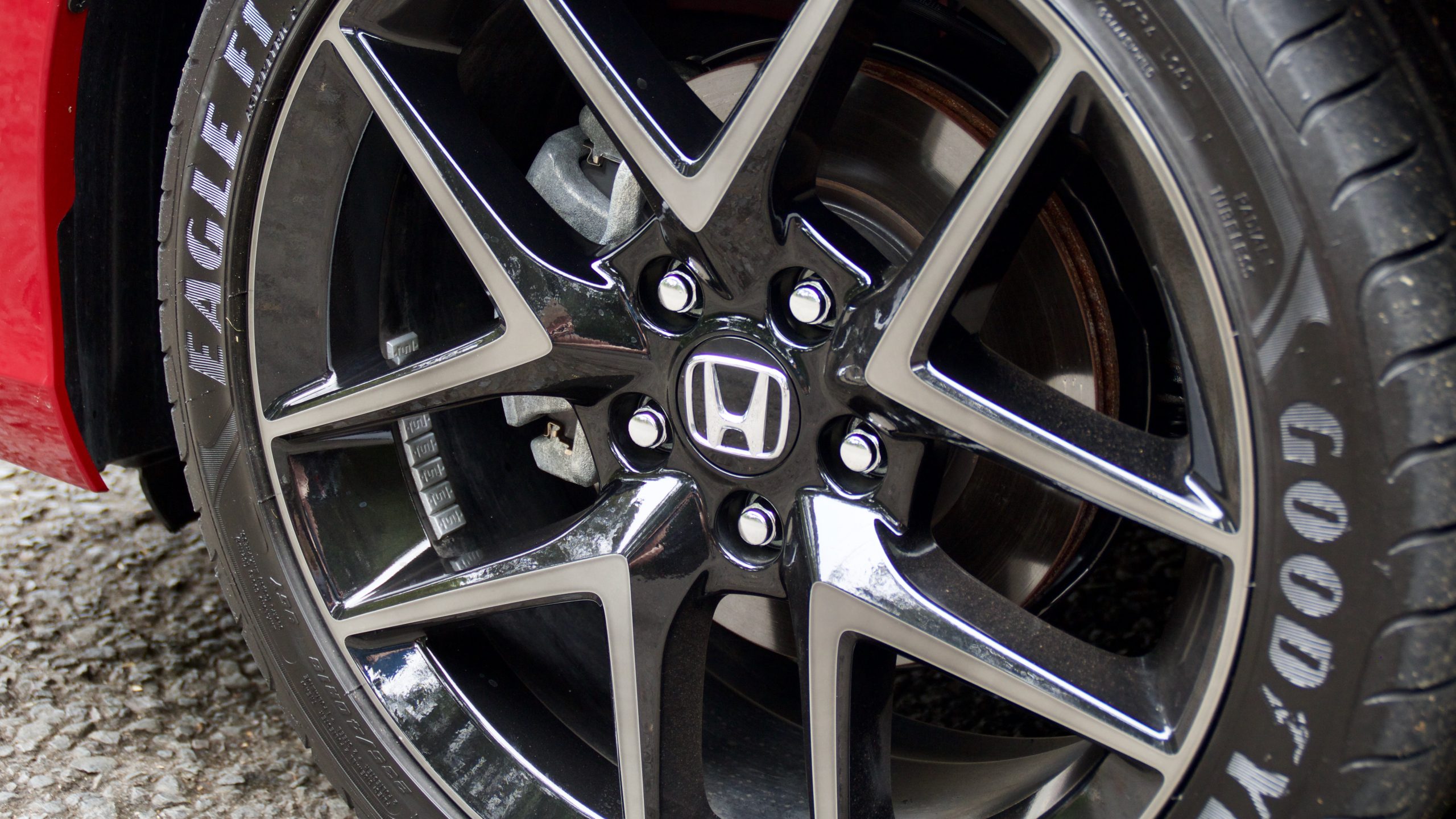
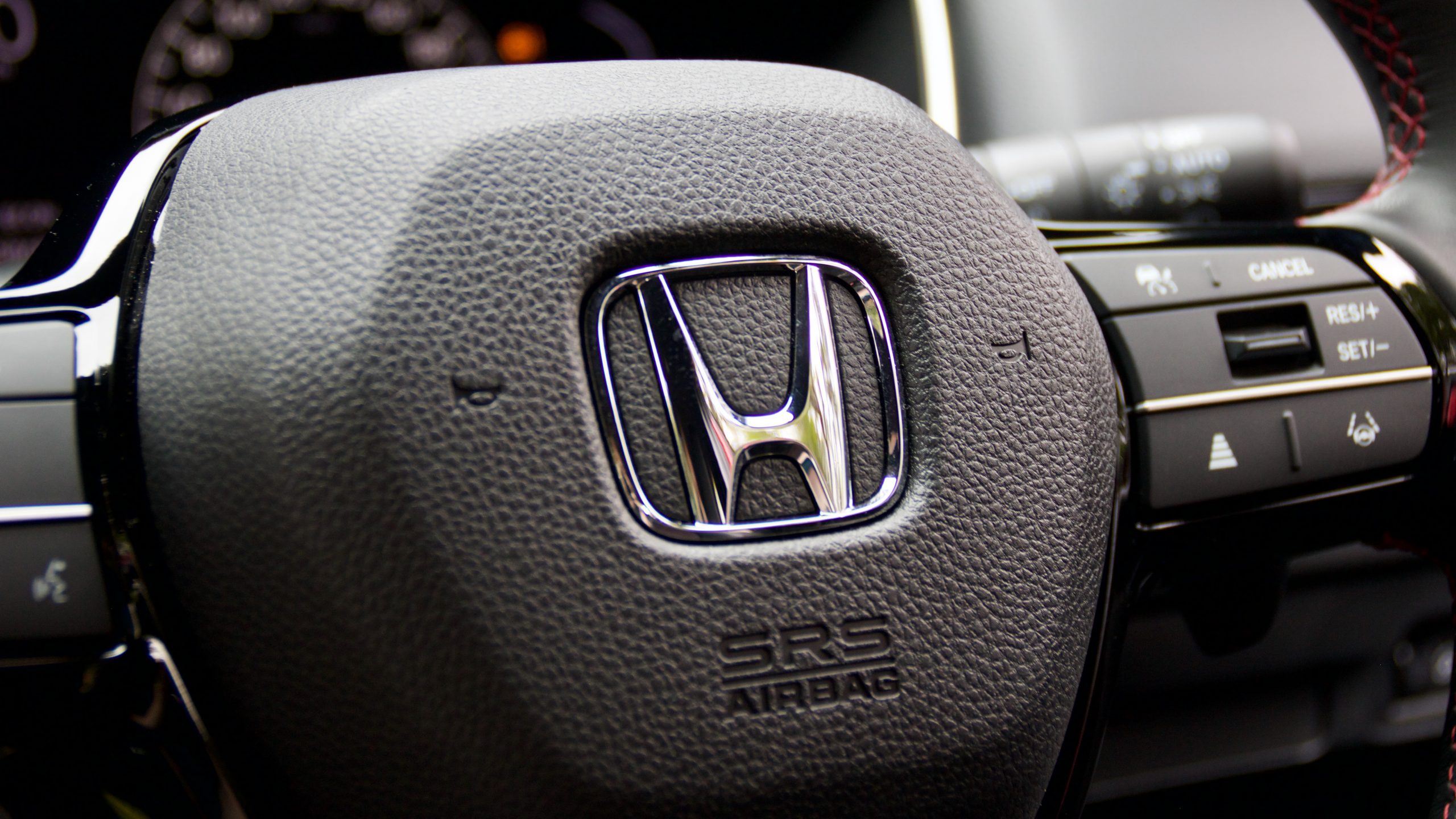

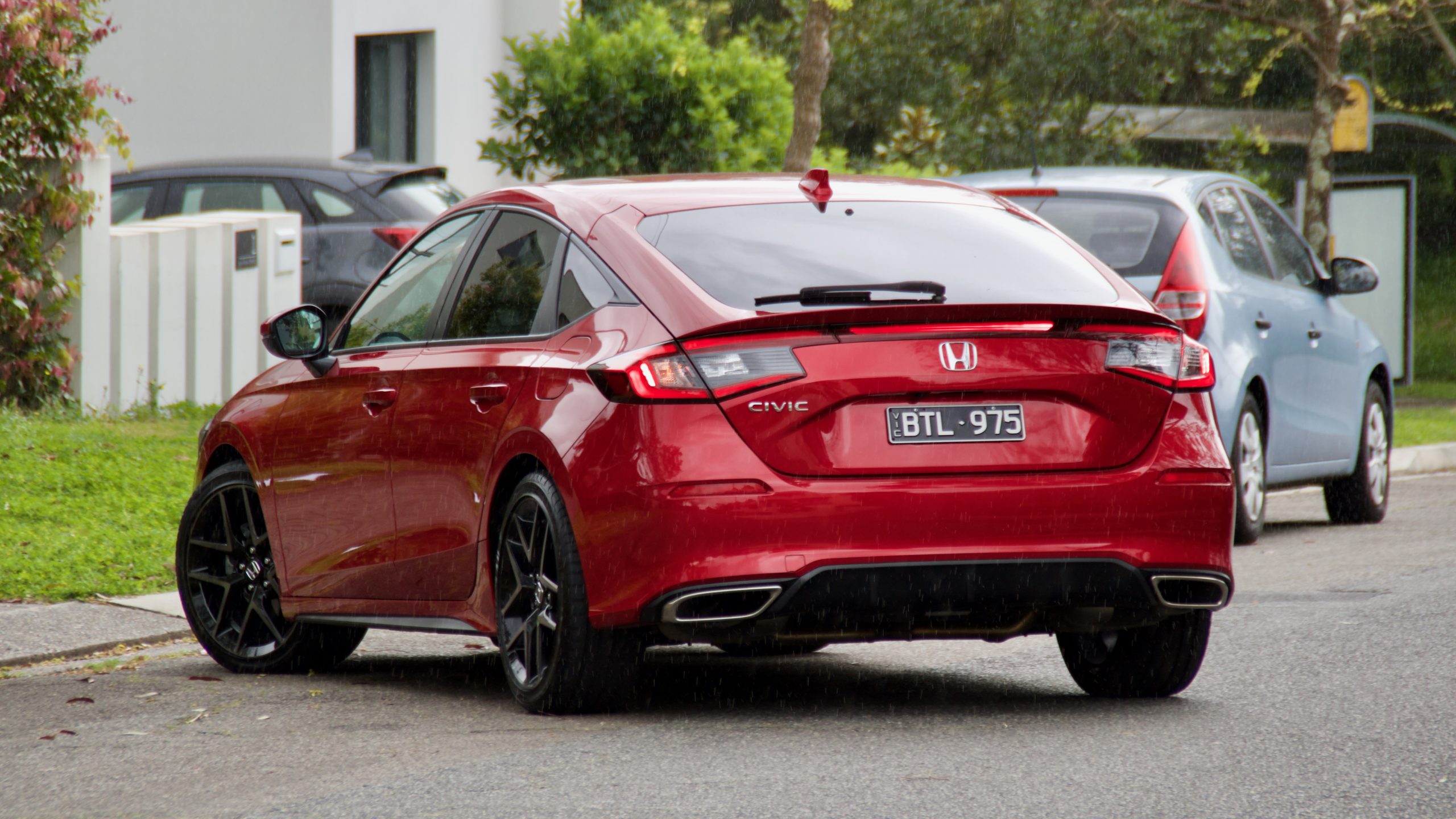
Unlike the current shape Mazda3, the Civic uses independent rear suspension, which pays dividends in both ride and handling. While the ride is firm at times, the body control is excellent and there’s very little body roll. It’s also quite nimble from behind the wheel and can be genuinely great fun to drive, while it also feels more mature and solid than the previous-generation Civic. The visibility is also excellent, though its road noise levels are still a touch higher than we’d like.
Interior & Practicality: 8/10
While the exterior is not all that different from the previous-generation Civic, the interior is a big step forward in both design and quality with a modern feel that features a lot of useable tech. Soft touch materials line the dashboard and front door tops, while the switchgear – like the window or AC controls – is nicely precise and feels great in hand. Having said that, the materials used in the Mazda3 Astina are even nicer – and it costs less money to buy.
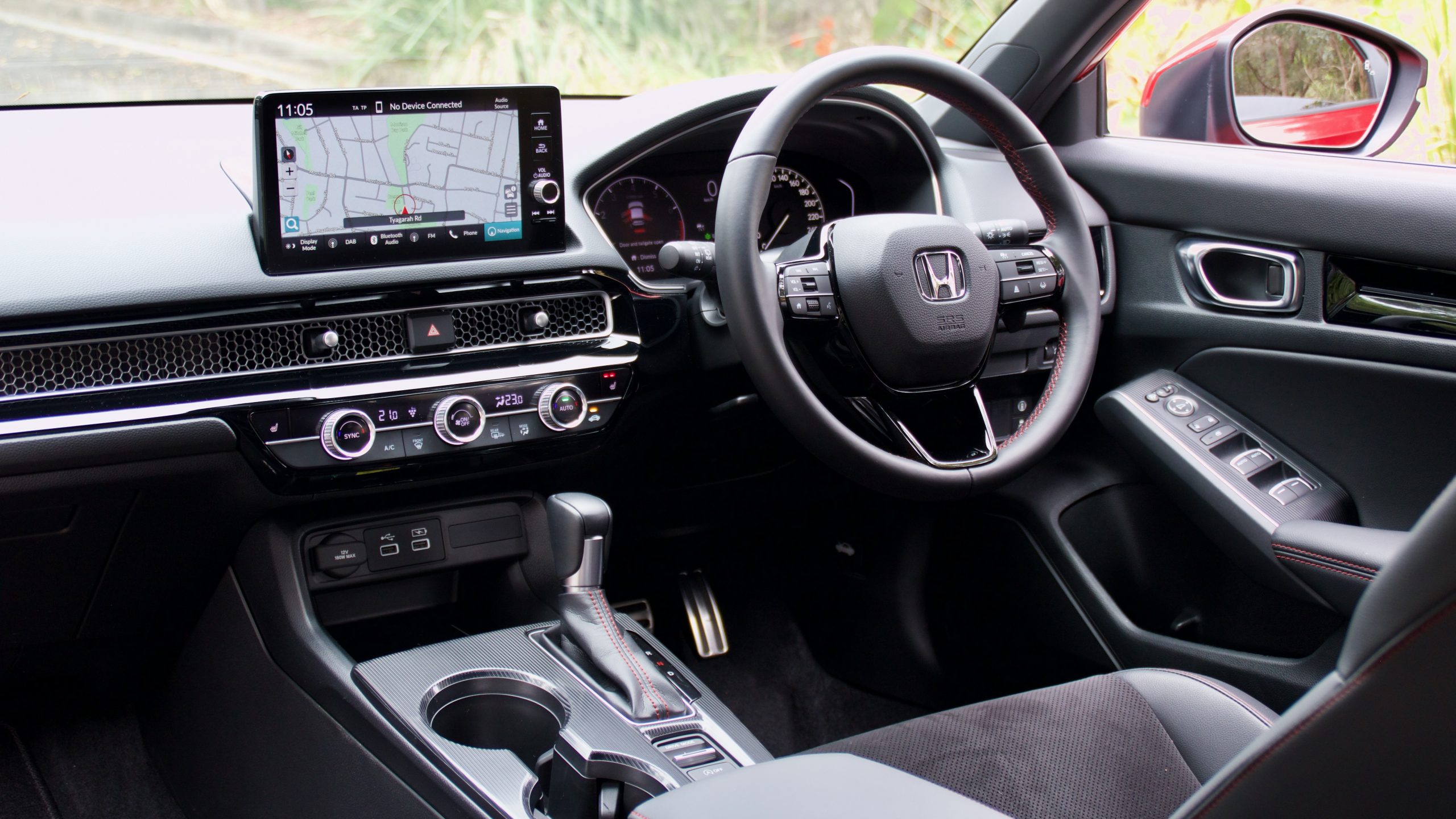
The Civic’s cabin is undoubtedly more practical than a Mazda3’s, however. There’s plenty of space for your trinkets, like big door bins, a large glove box, a big centre box and cup holders, while the wireless phone charger underneath the dashboard is large as well, and very handy. We do wish the AC controls lit up red or blue when adjusting the temperature up or down like they do in the HR-V, however.
Sitting in the middle of the Civic’s dashboard is a 9.0-inch touchscreen with wireless Apple CarPlay, wired Android Auto, satellite navigation and digital radio. It’s the same unit that’s used in the HR-V, and it’s very easy to use, quick to respond to touch and its screen quality is reasonable as well. The rear camera picture quality leaves a bit to be desired, however. The 12-speaker Bose sound system is punchy.
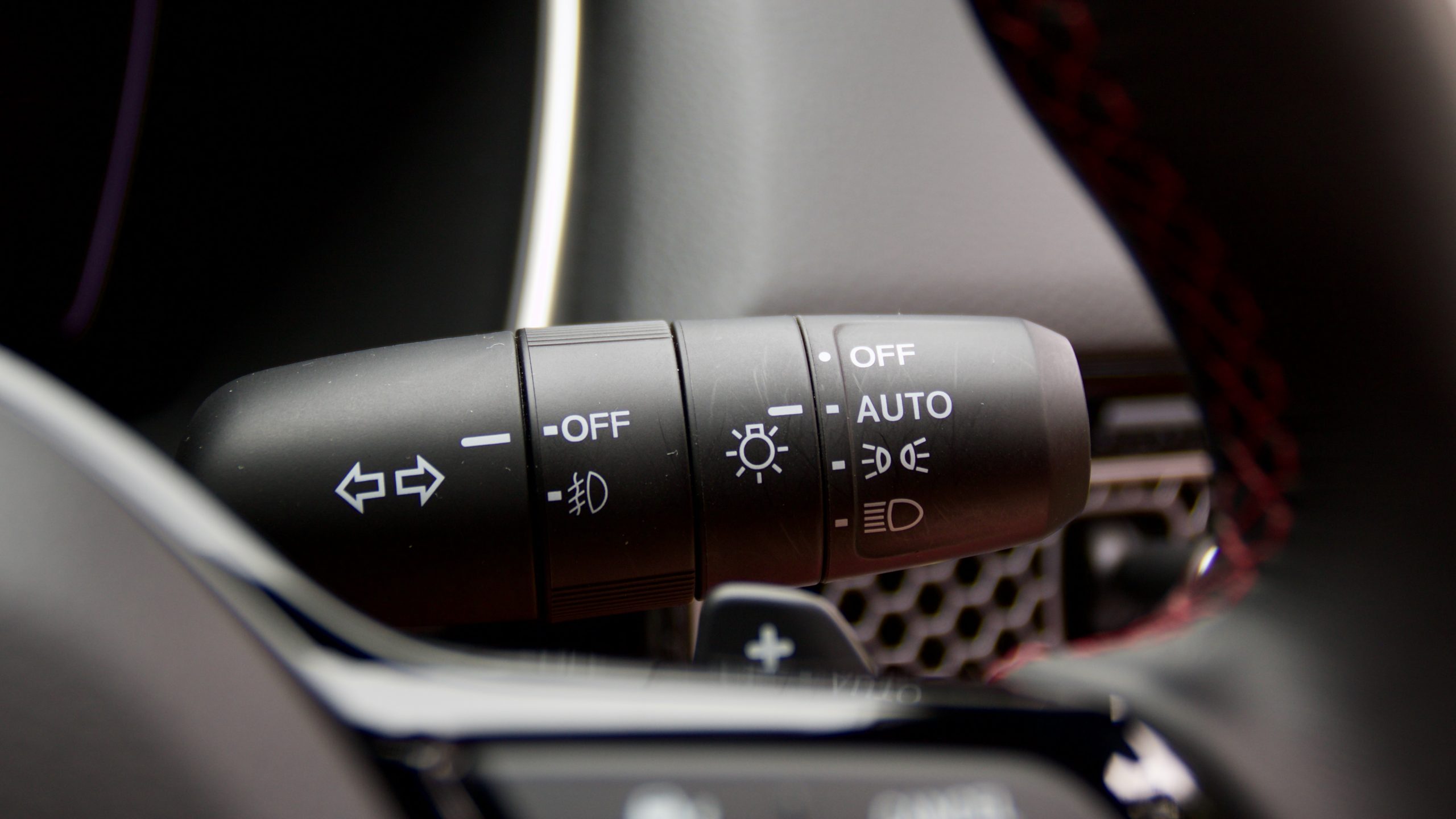
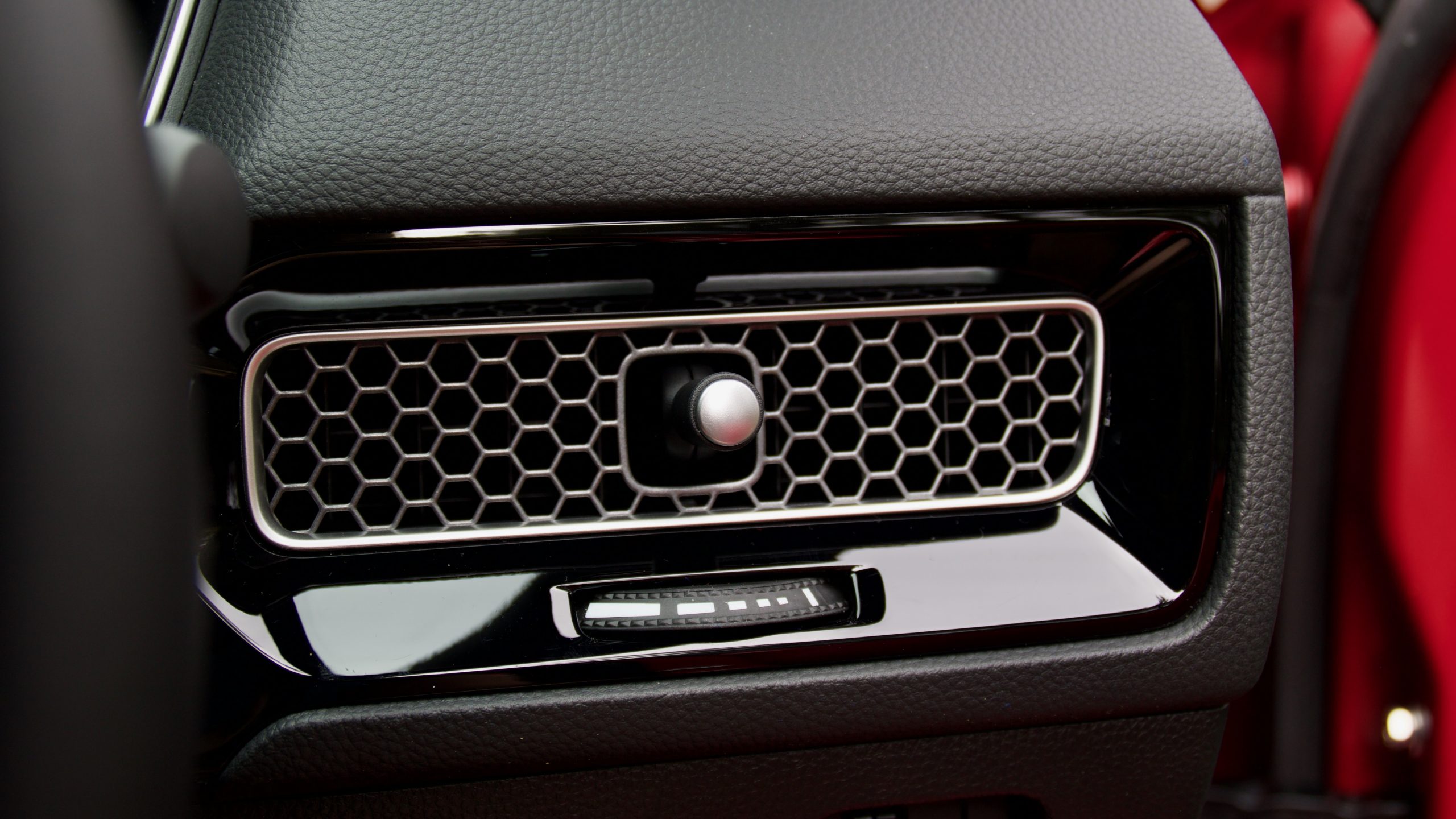
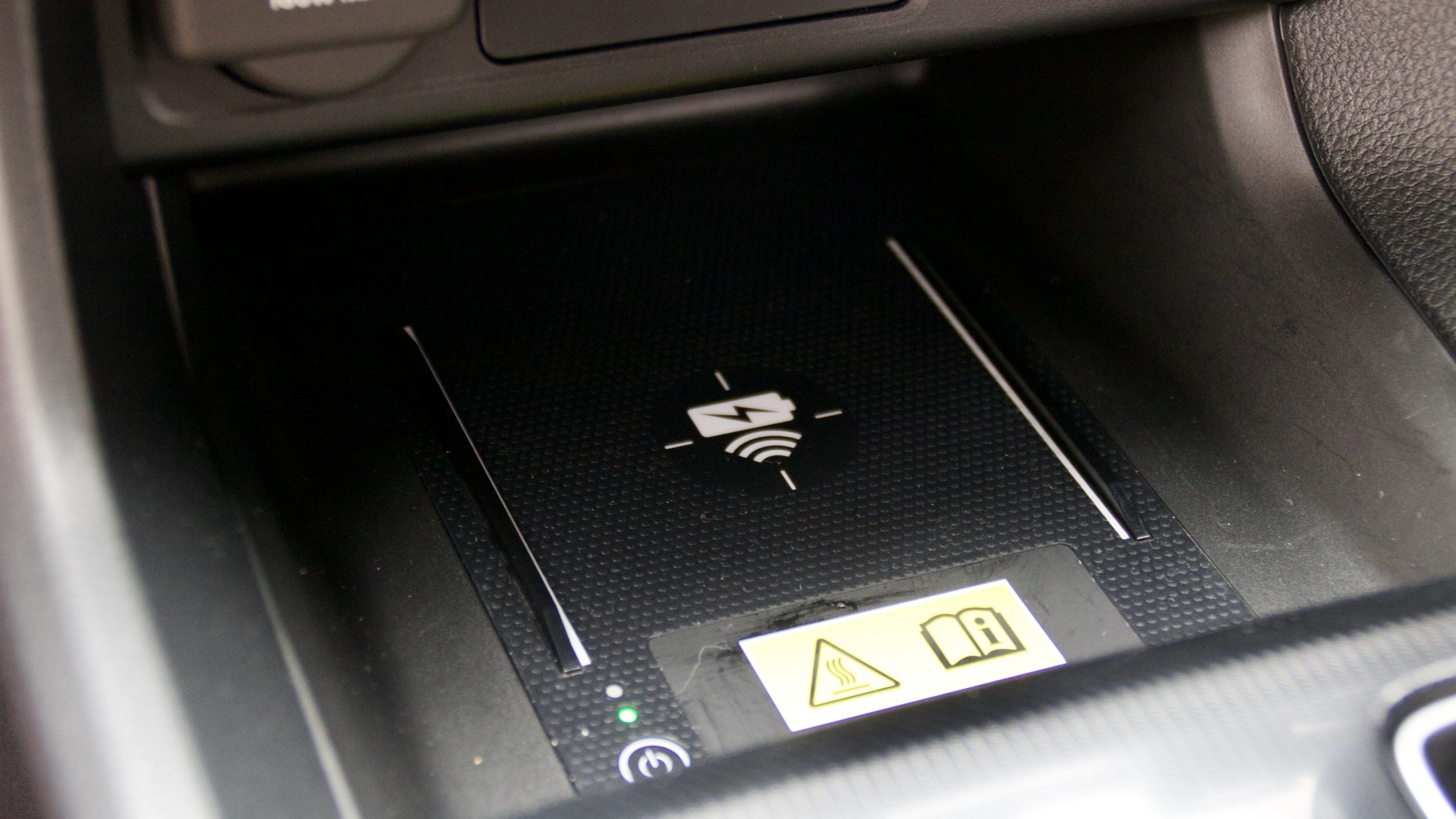

Ergonomically, the new Civic’s cabin is excellent. Everything is simple to use, with big and simple icons, and unlike the Mazda3’s infotainment system, the Civic’s is controlled by touch. The visibility is a massive plus as well, with a wide view in whichever direction you look. The seats are also quite comfortable and offer good side support, though we wish they had lumbar adjustment.
Like the previous-generation Civic, the rear seat is quite roomy for the segment – especially against the cramped Mazda3. Even taller people will fit fine with ample leg- and headroom, while the large windows give good outward visibility as well. There are also rear vents and a centre arm rest with cup holders, though only one map pocket and no charging ports.
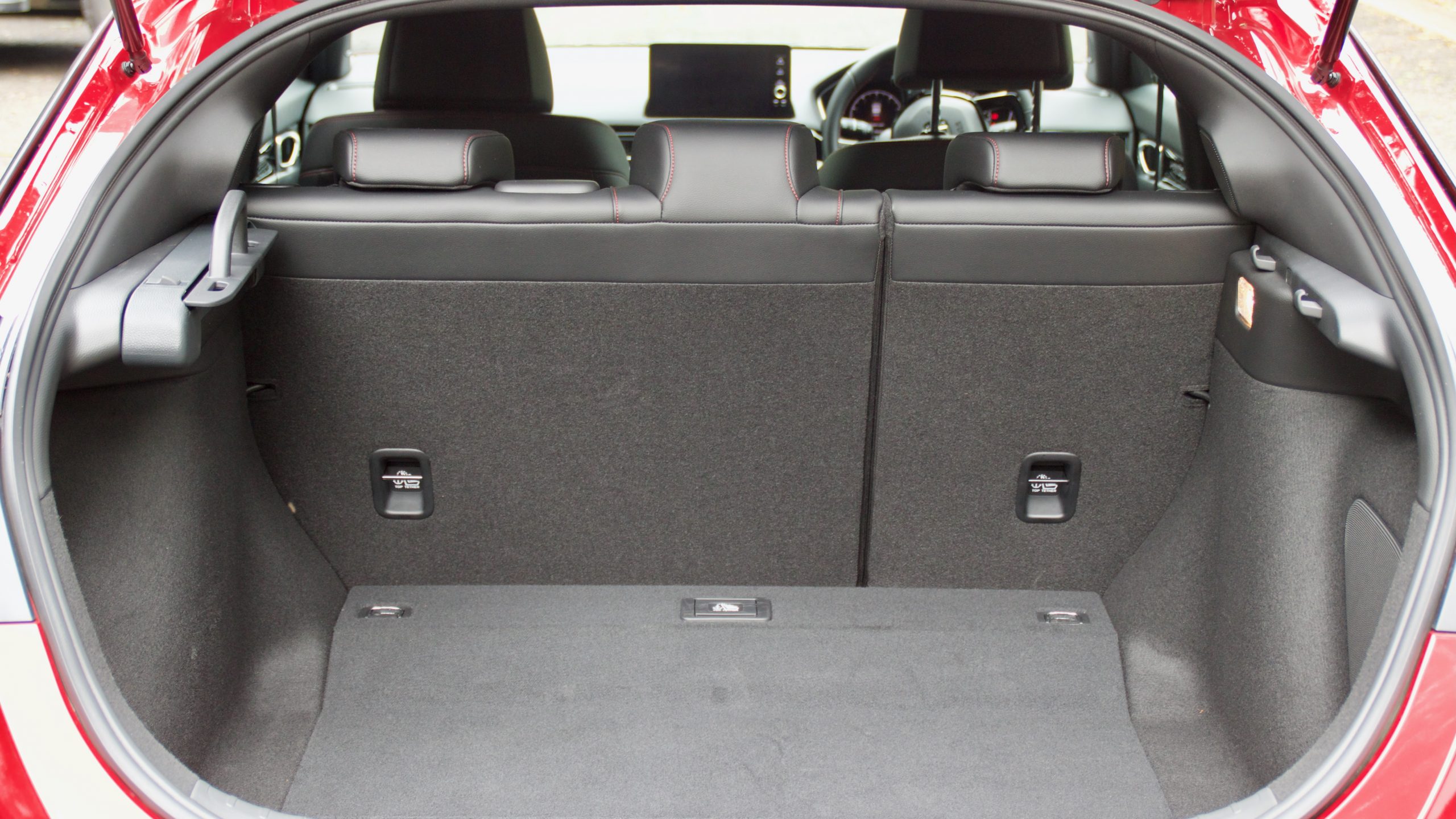
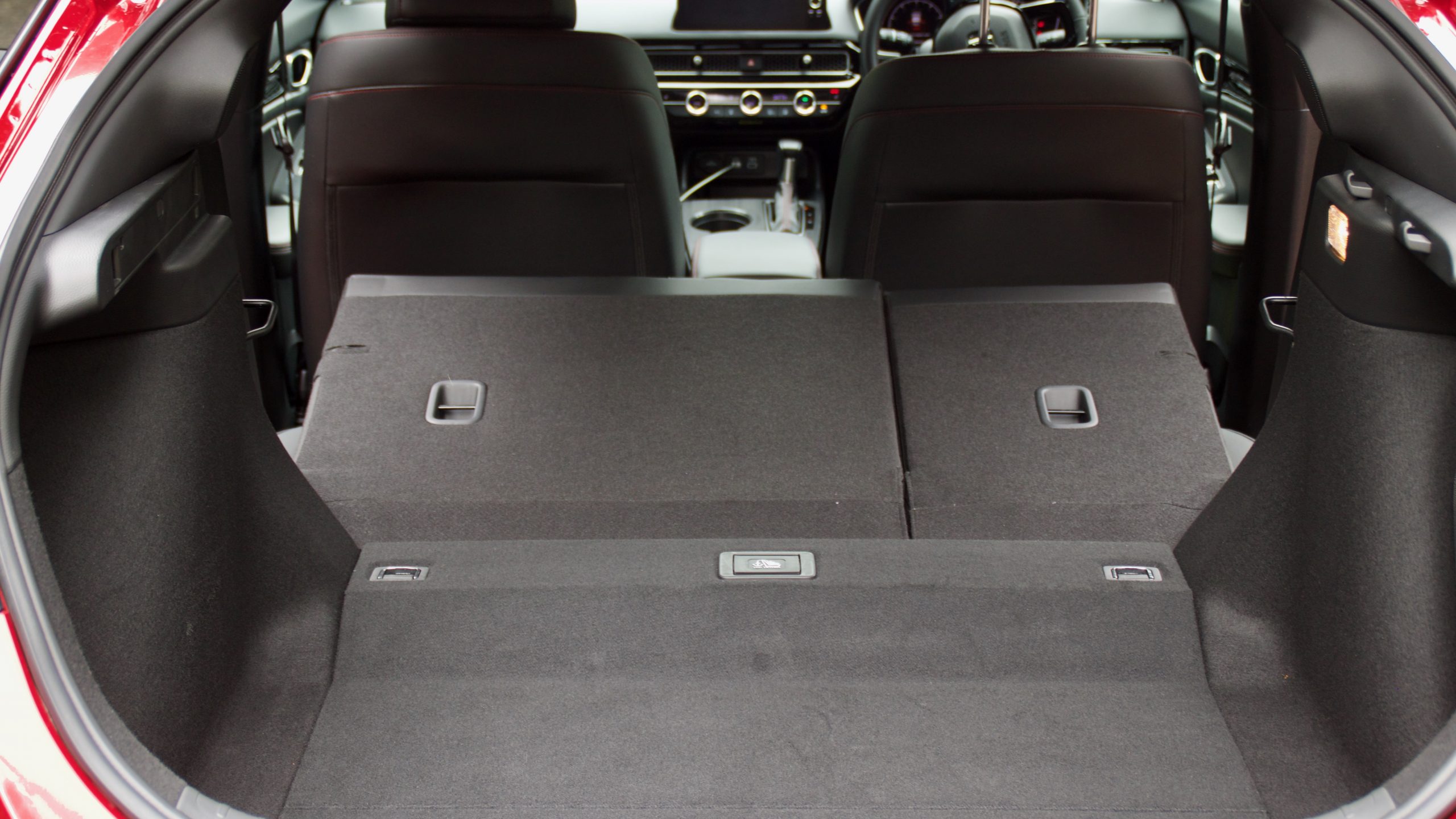
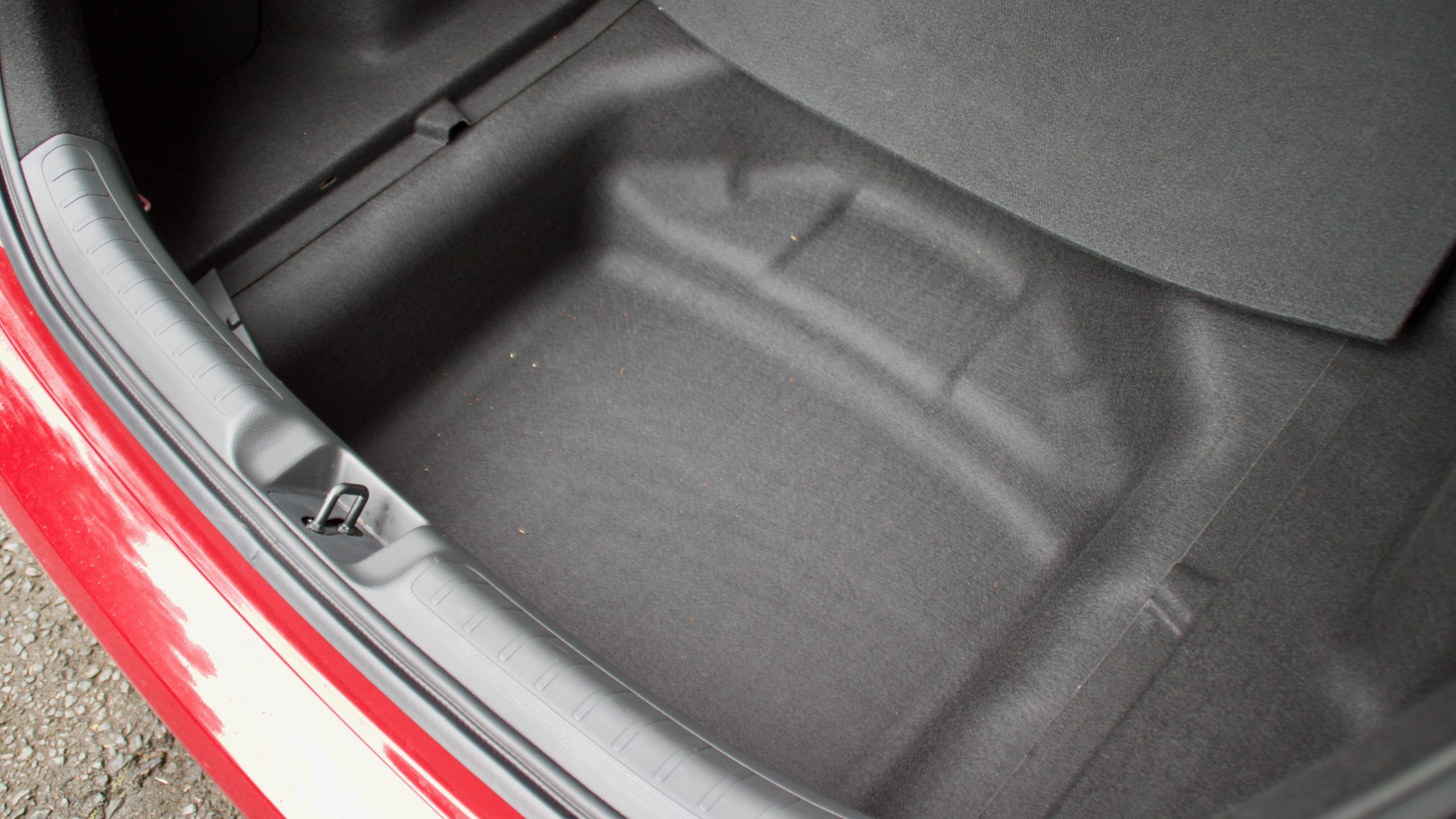
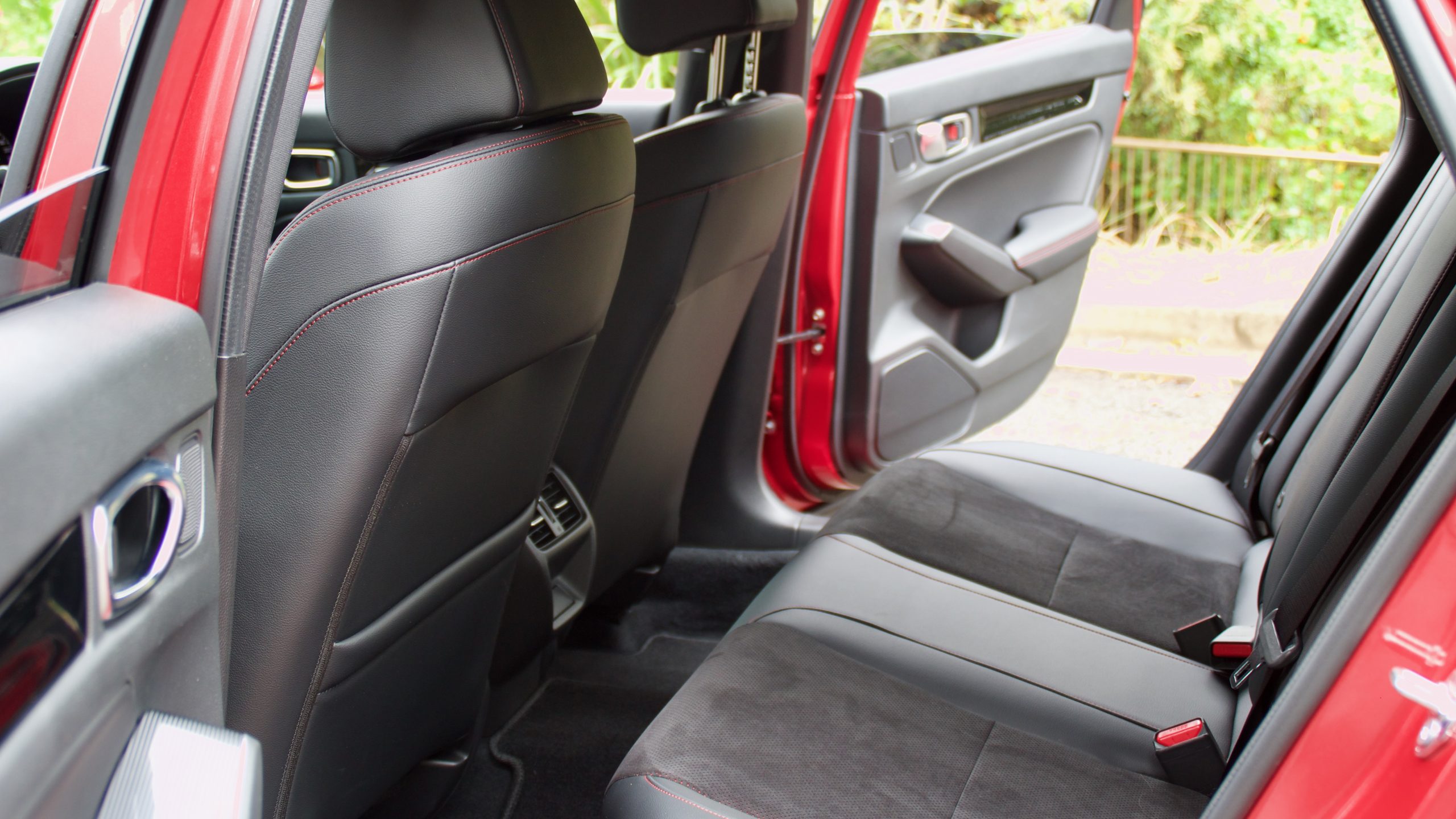
The Civic’s boot is one of the biggest in the segment with 449-litres of space on offer, which includes 45L of under-floor storage – a big contrast to the Mazda3’s small 295L boot. The opening is wide as the Civic is shaped more like a liftback, which is great for easy access. Unfortunately, there’s a noticeable hump in the boot floor, but the seats fold almost flat in line with said hump. Disappointingly, there’s no spare wheel, just a tyre repair kit.
Service & Warranty: 9/10
As with other new Honda products, the 2022 Honda Civic VTi-LX comes with a five-year/unlimited km warranty with five years of roadside assistance and super cheap servicing for the first five years as well: just $125 a pop (for each yearly/10,000km service) adding up to $625 for five years of servicing. Only the short 10,000km service intervals take a shine off things slightly.
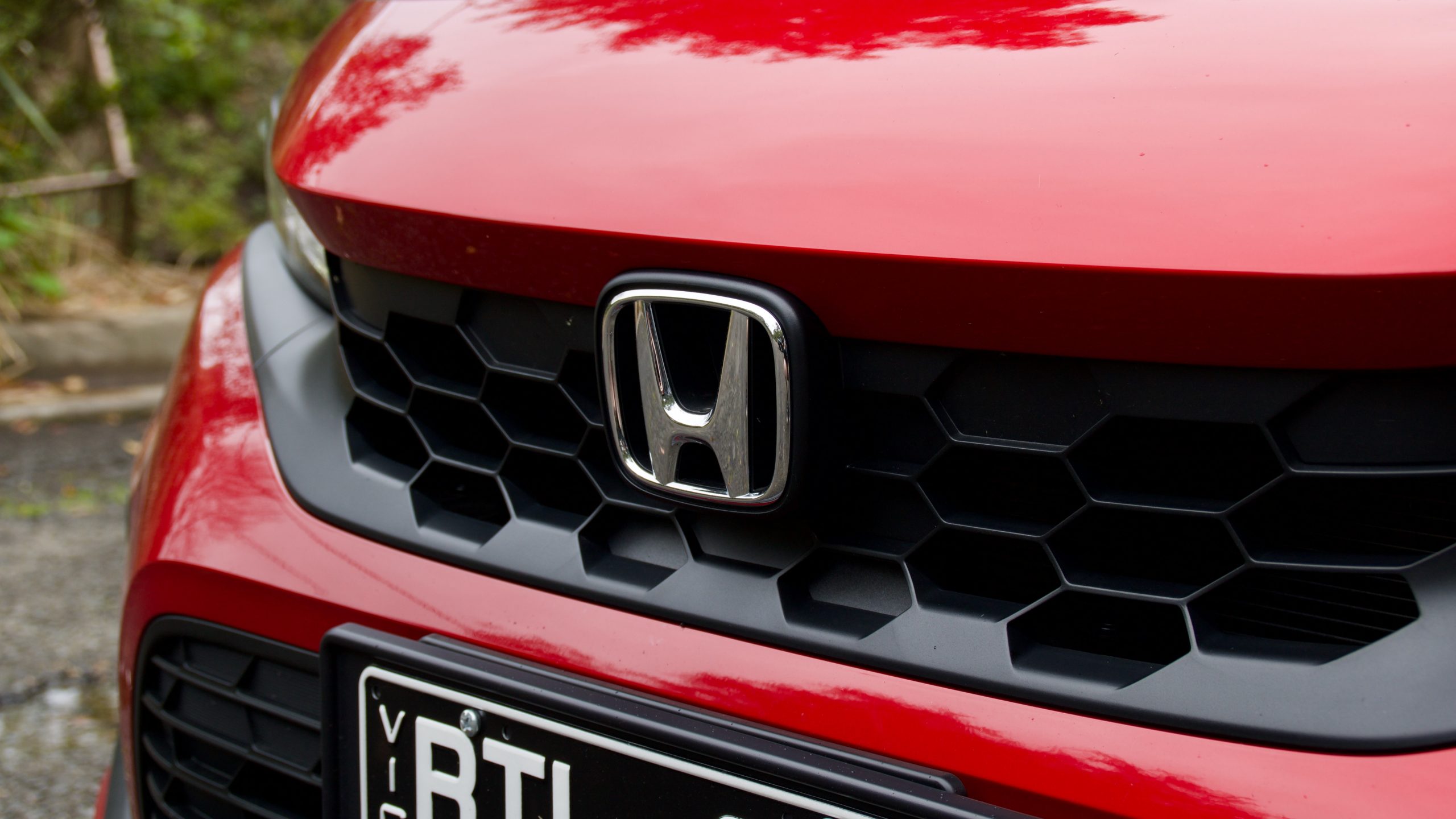
The Mazda3 features exactly the same length of warranty and roadside assistance as the Civic, as well as its short service intervals, though its service cost adds up to $1,639 over five years ($327 per service) or more than double that of the Civic. Things are significantly more expensive at your Volkswagen dealer, where five years of servicing the Golf R-Line costs a massive $3,141 ($628 per service – or slightly more than the Civic’s five-year total service cost) for pay-as-you-go servicing or $2,400 for a pre-paid service plan. The Golf has longer 15,000km intervals, but that’s still five times more expensive than the Civic.
The 2022 Honda Civic VTi-LX DiscoverAuto Rating: 8.0/10
Like the new-generation HR-V, we were quite impressed with the 2022 Honda Civic VTi-LX. It offers a wide range of talents, from its fun and mature new driving dynamics to its more modern and plush-feeling interior, excellent practicality, ergonomic excellence, very cheap service costs and its sleek new styling. Aside from the firm ride, its highway-speed road noise levels and the fact that it’s missing some equipment compared with both its European cousins and competitors, the new Civic is pretty darn perfect.
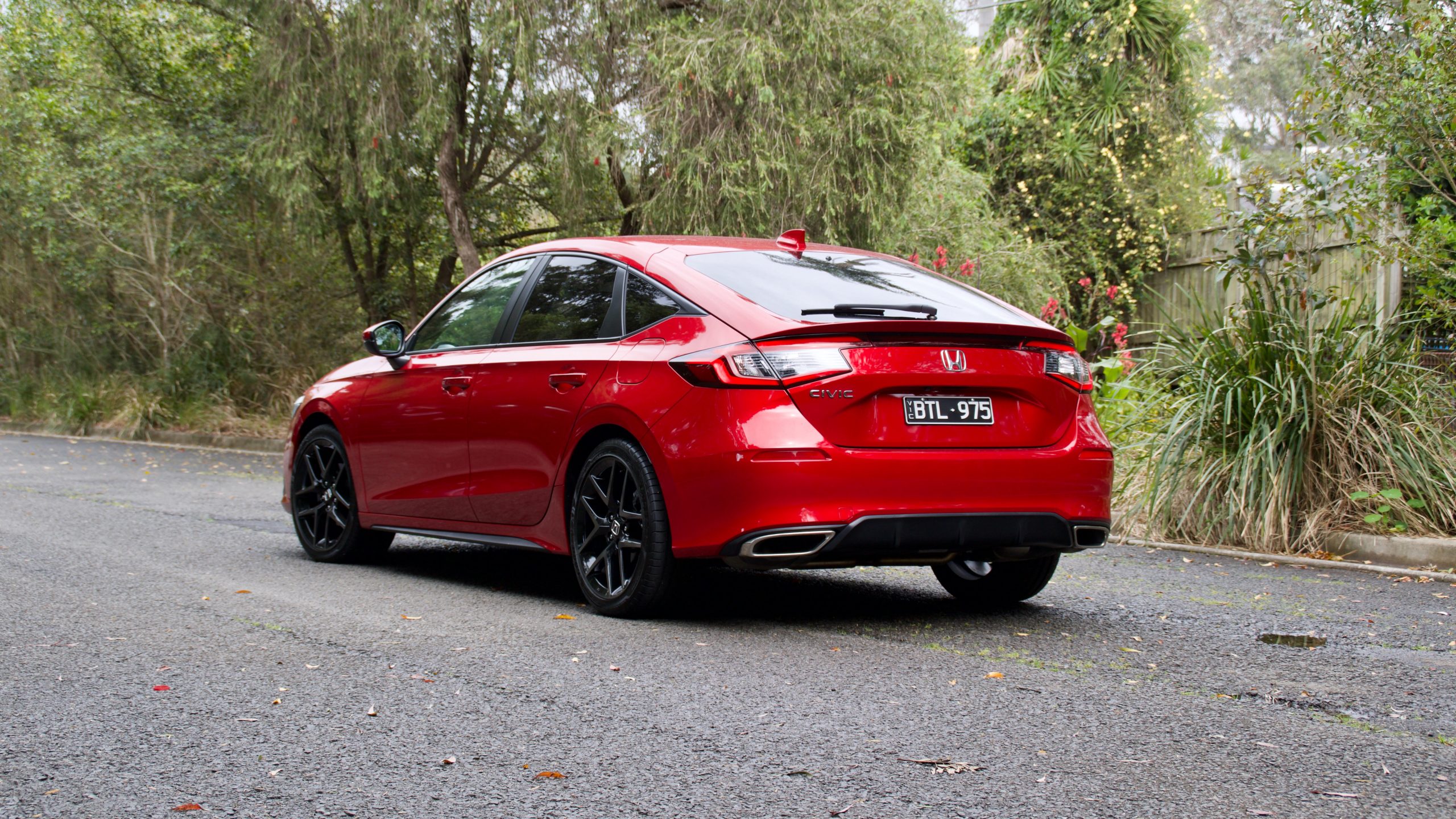
But, like the HR-V, the Civic’s price is just too high, especially when a Mazda3 Astina has a price that’s lower by thousands of dollars and it’s better equipped and its interior feels more premium. In our opinion, the new Civic is a much better car than the previous-generation car but because of its high pricing, not many will consider it. And we think that’s a shame, because pricing aside, it’s one of the best on offer in the segment currently.
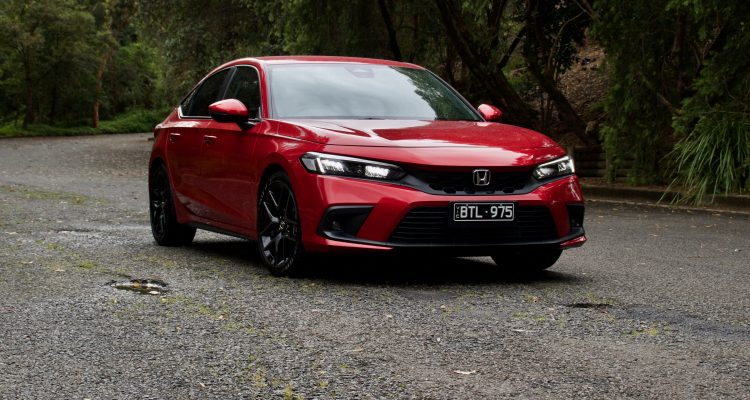
Leave a Reply